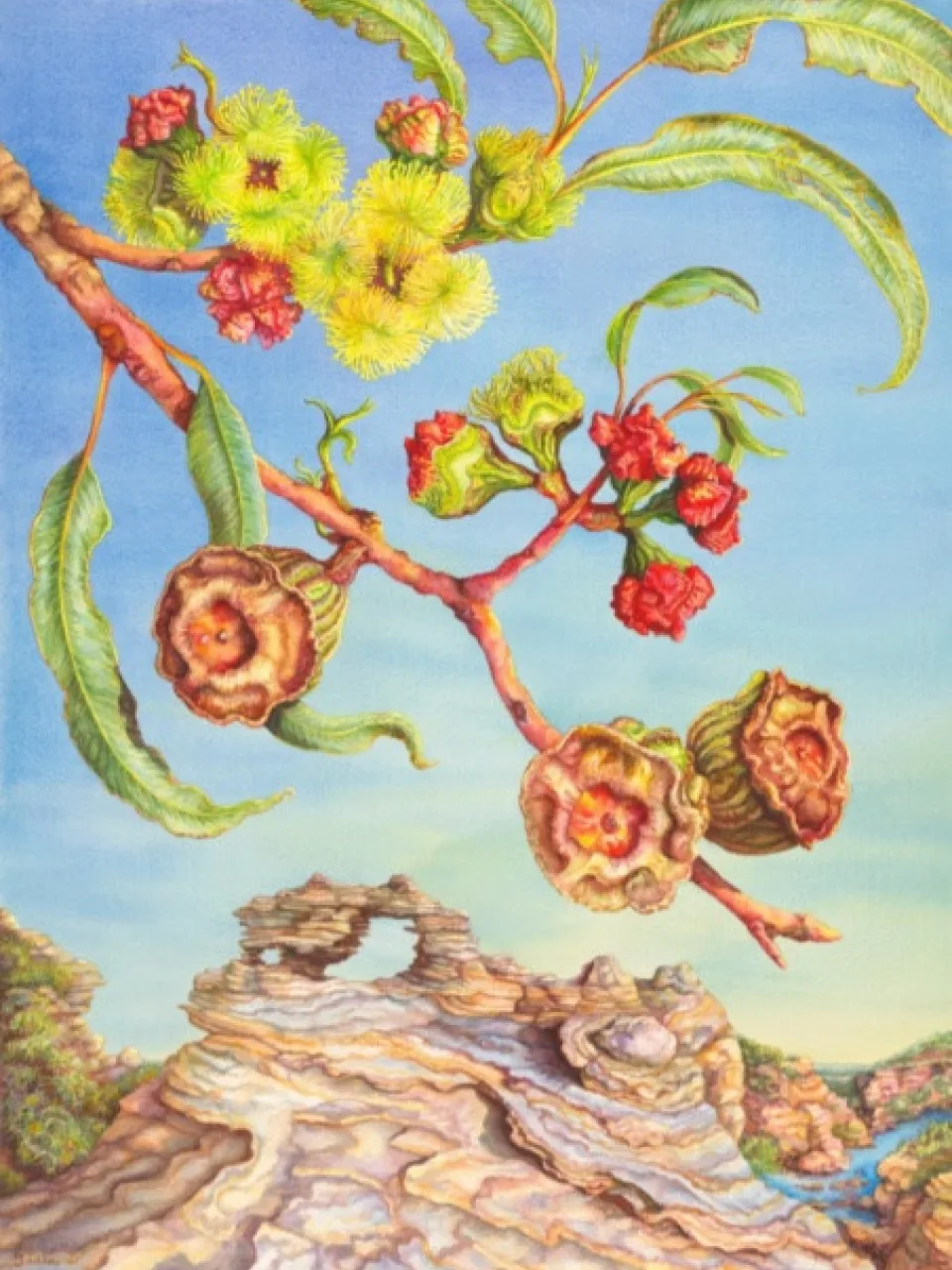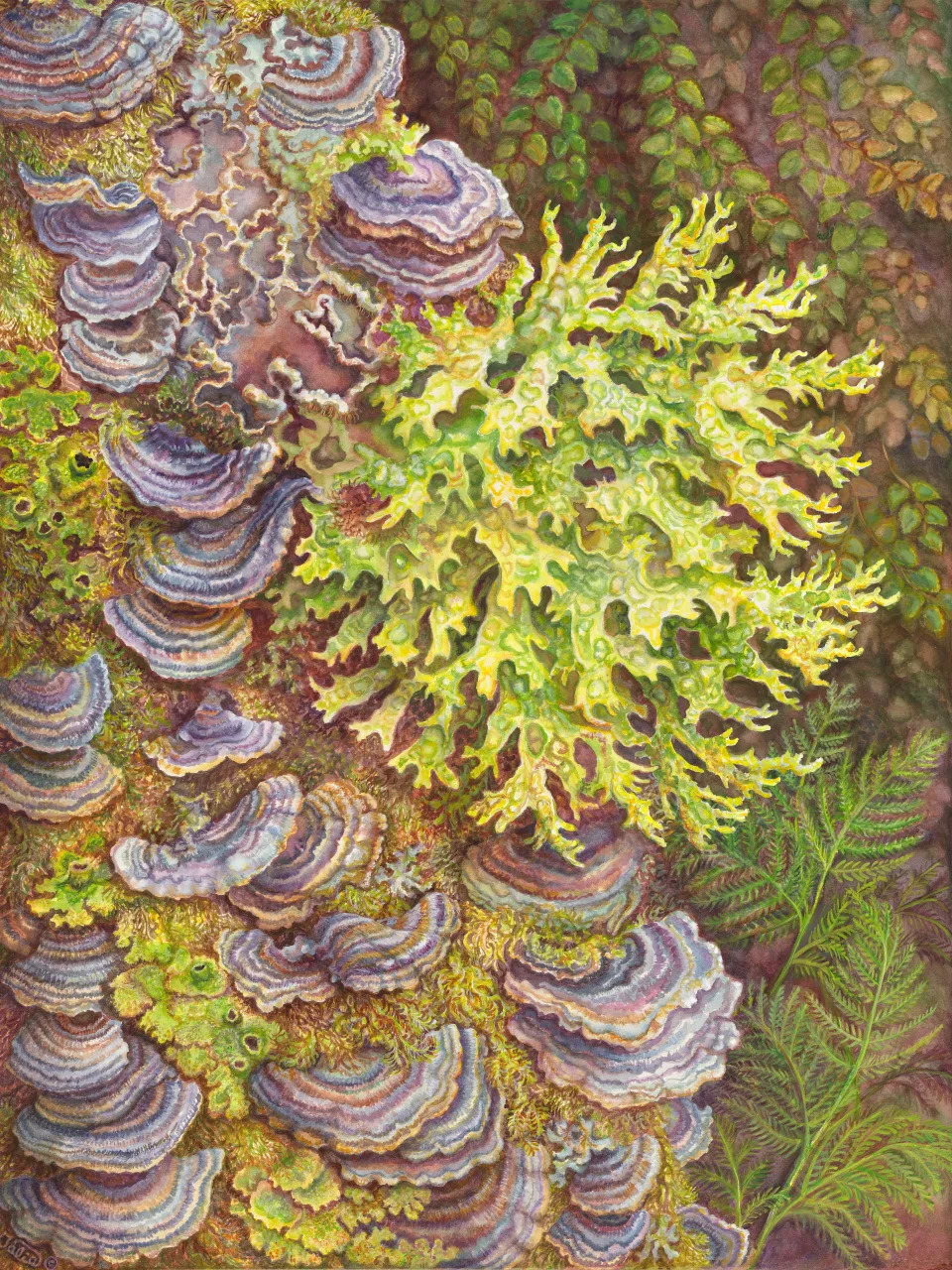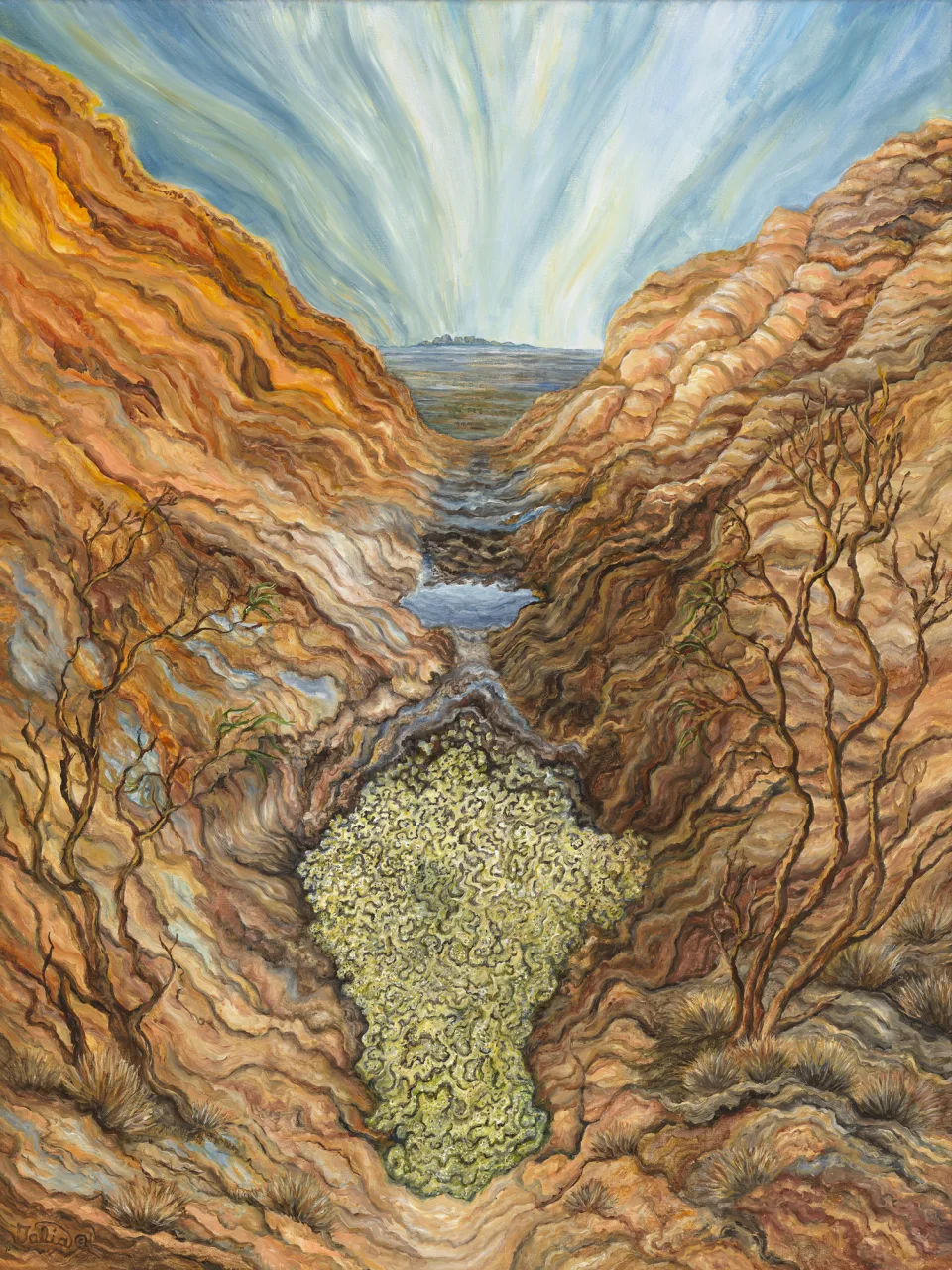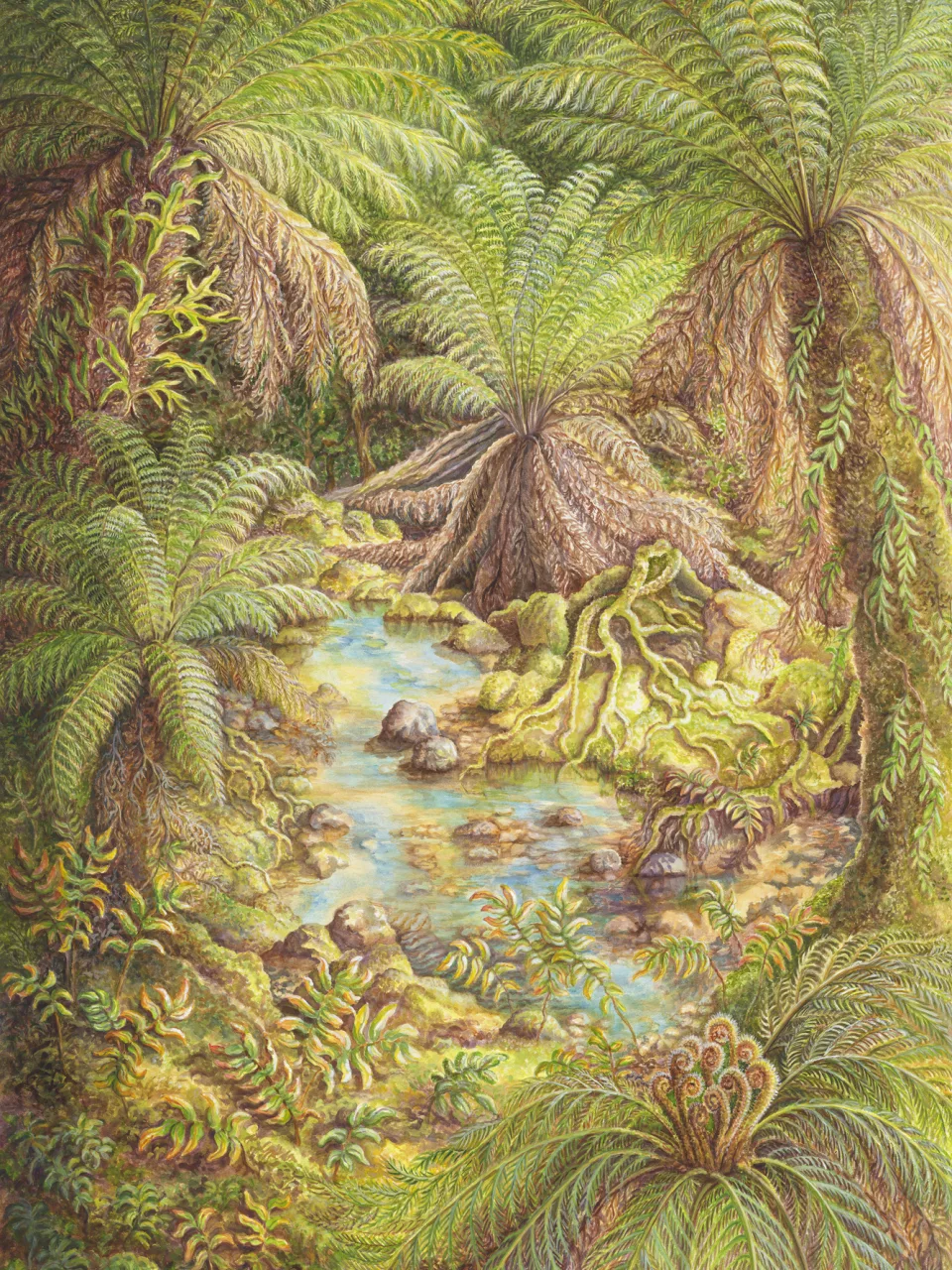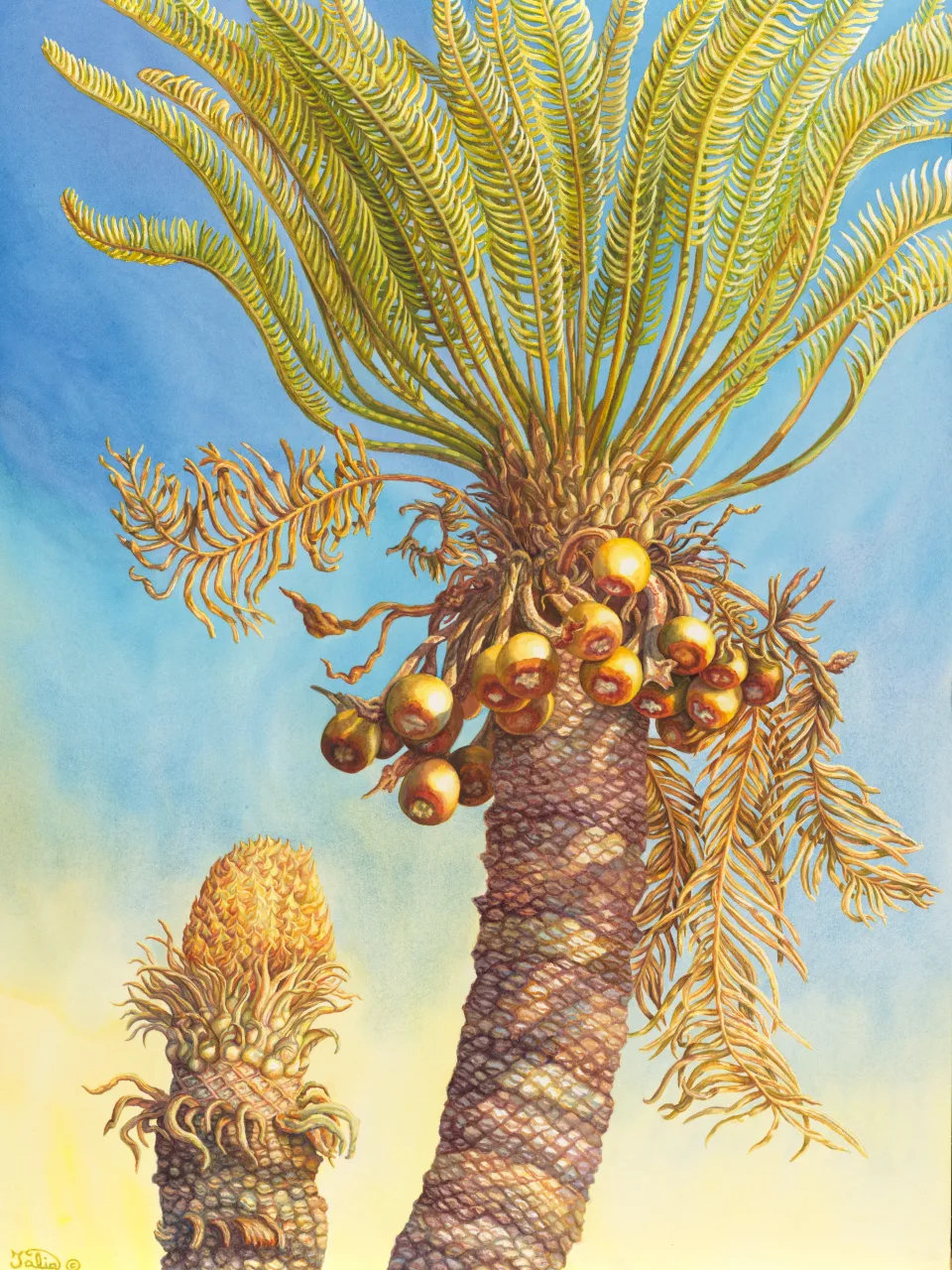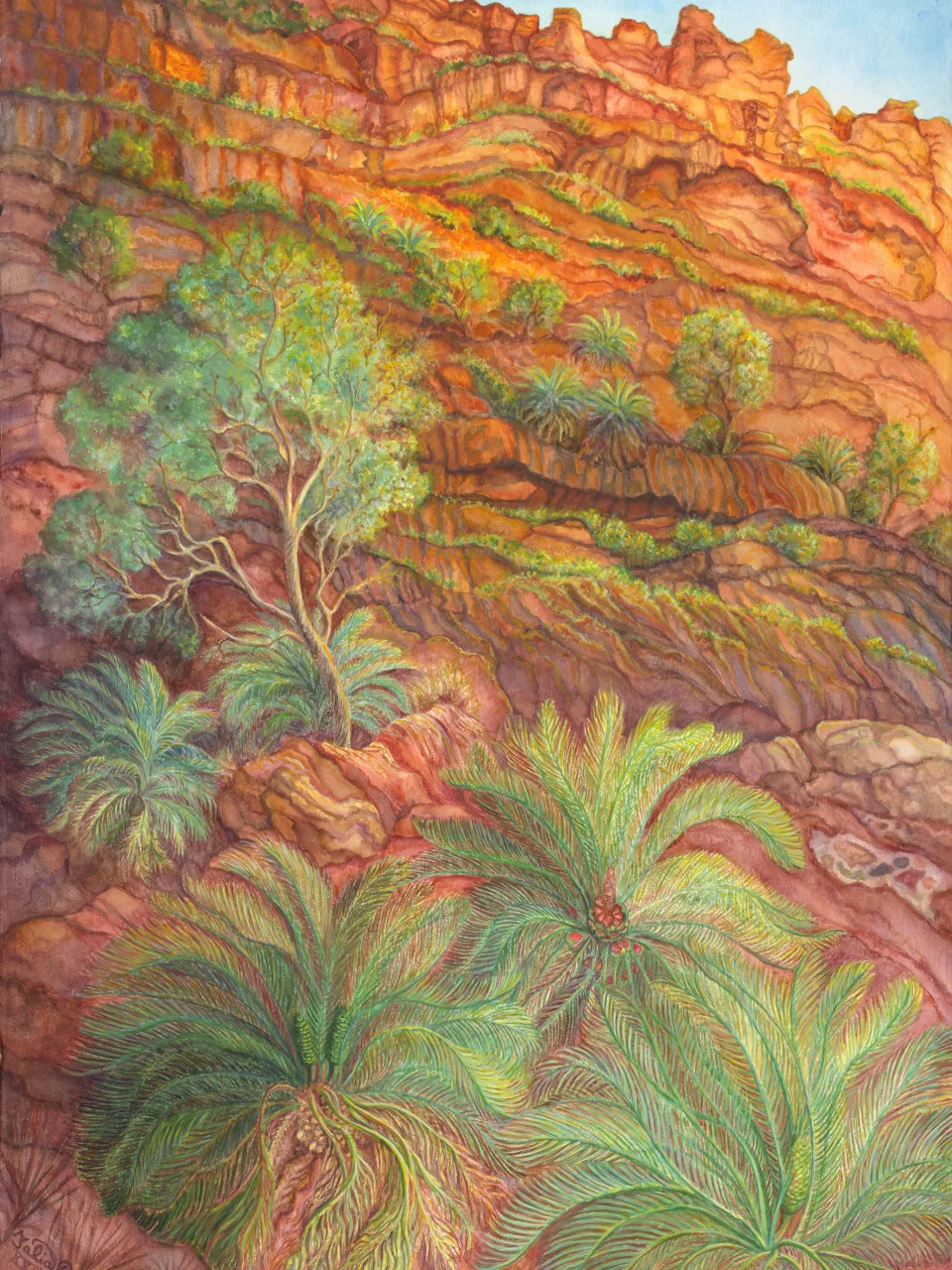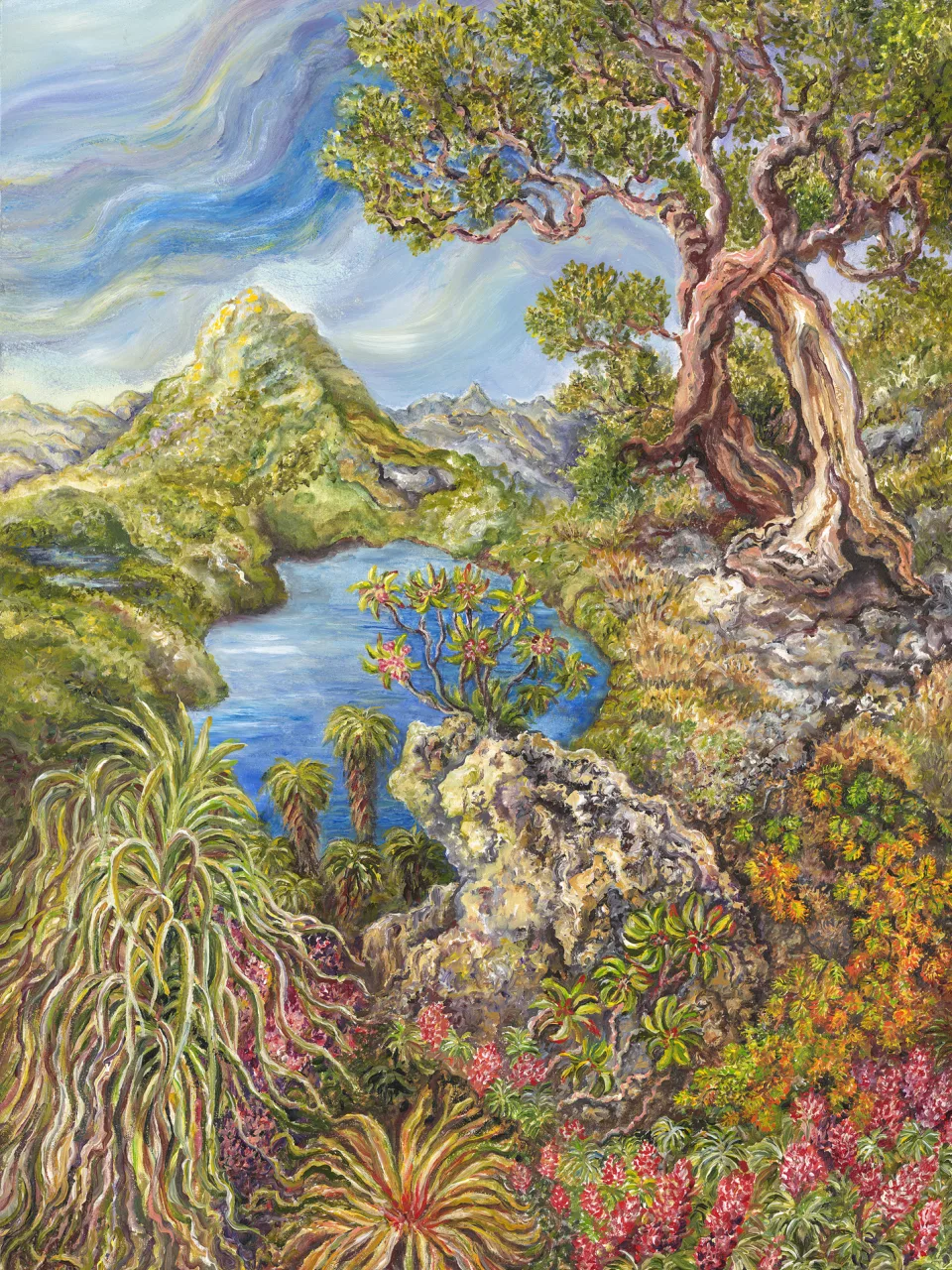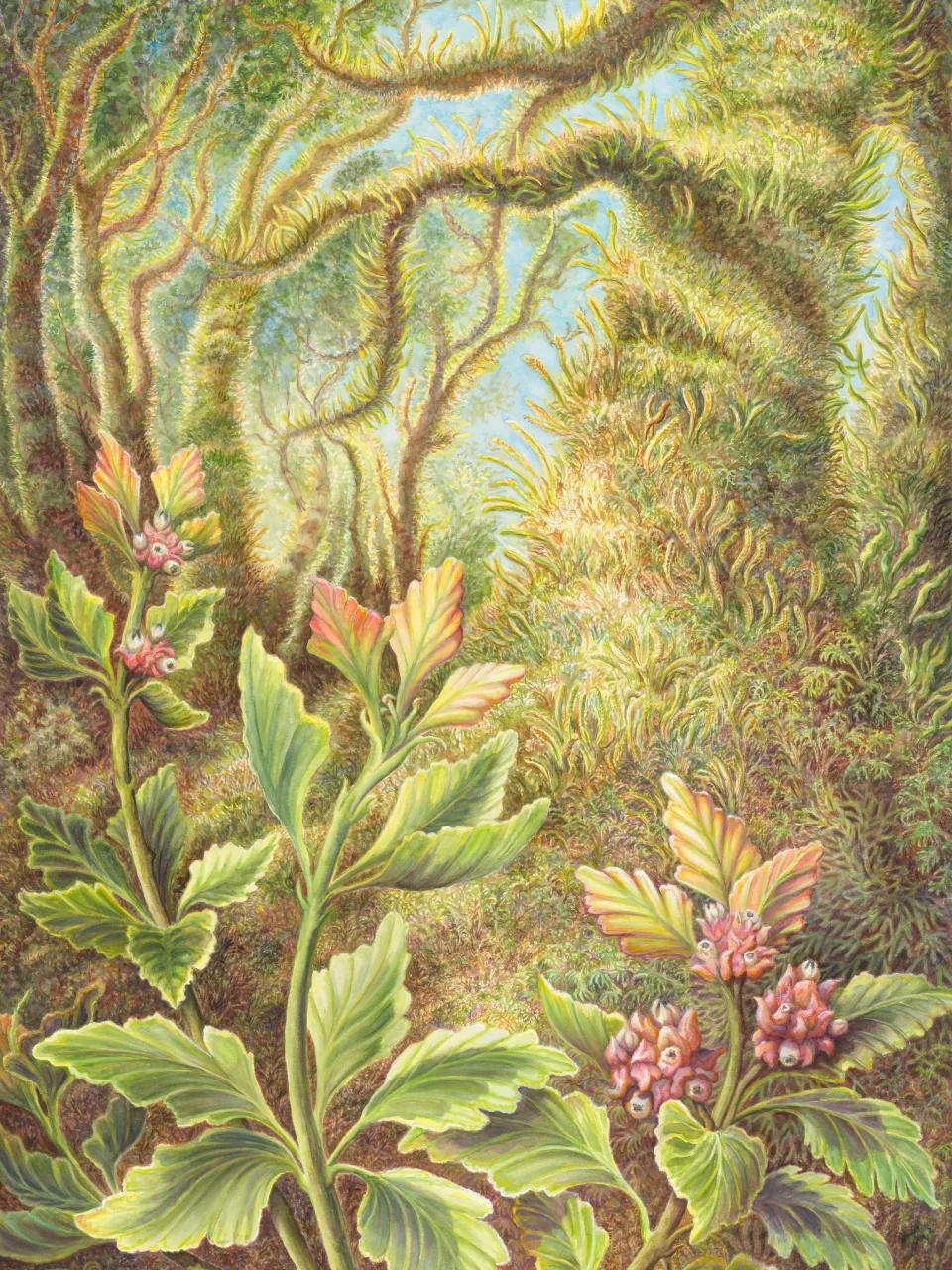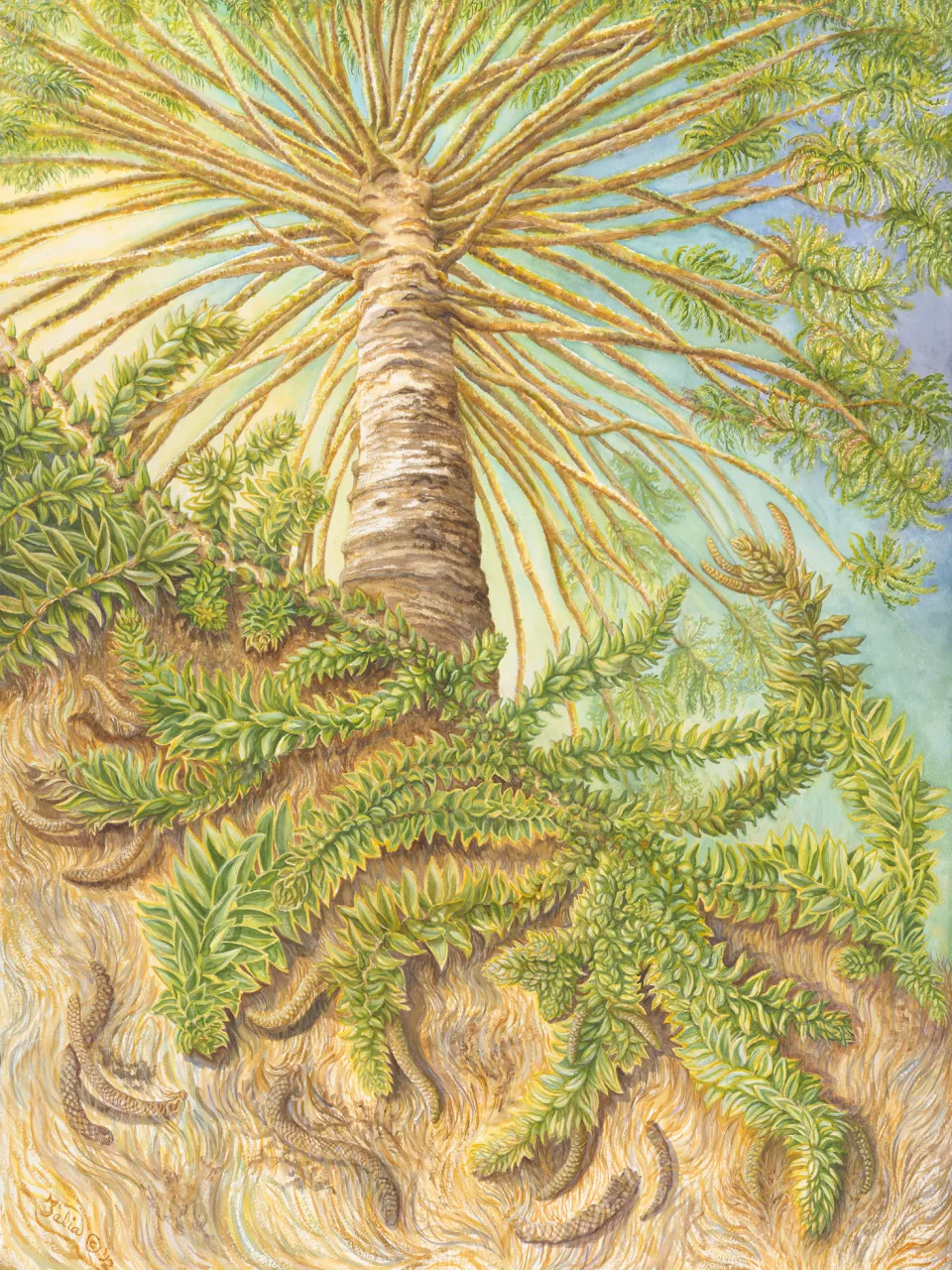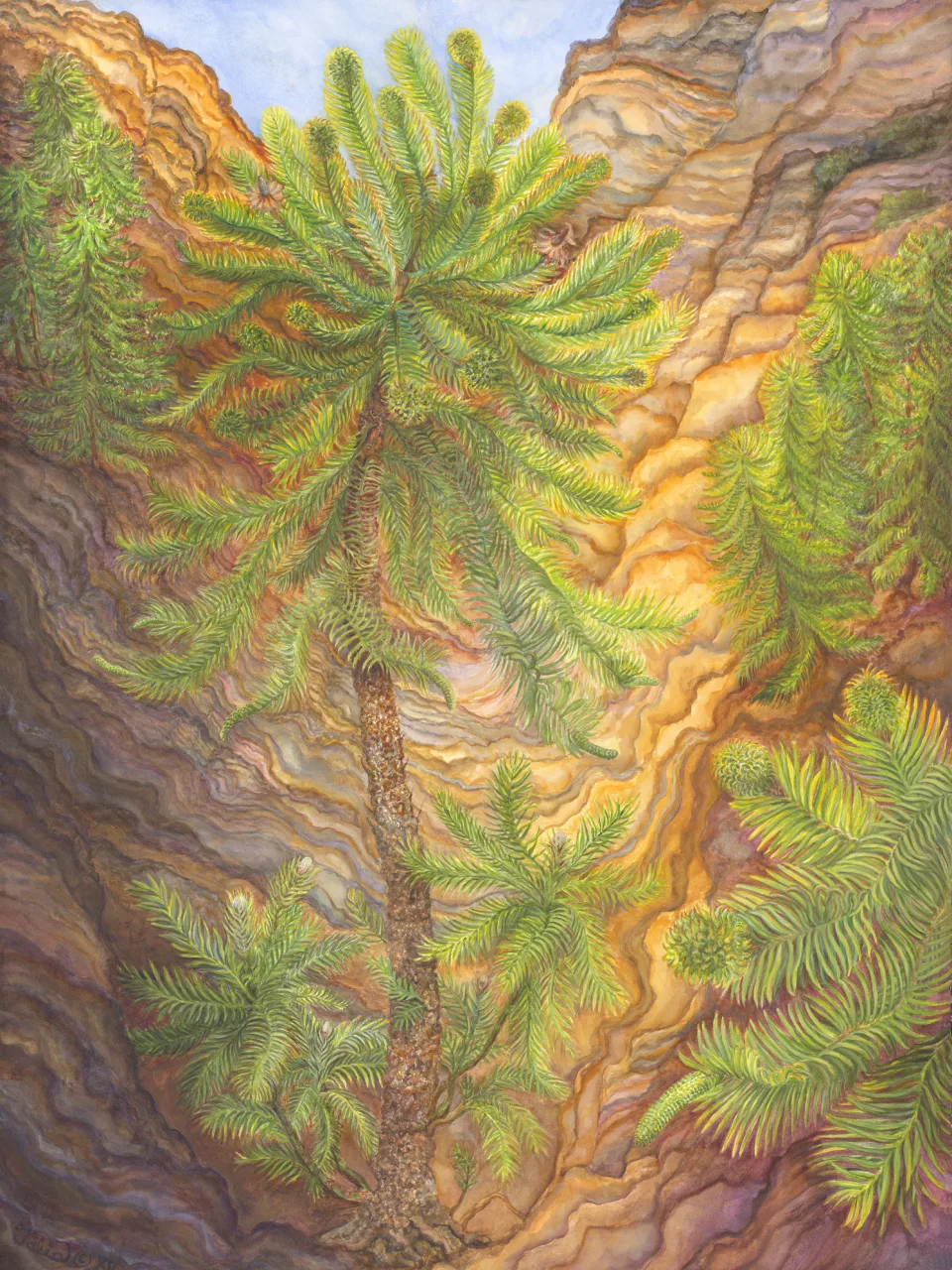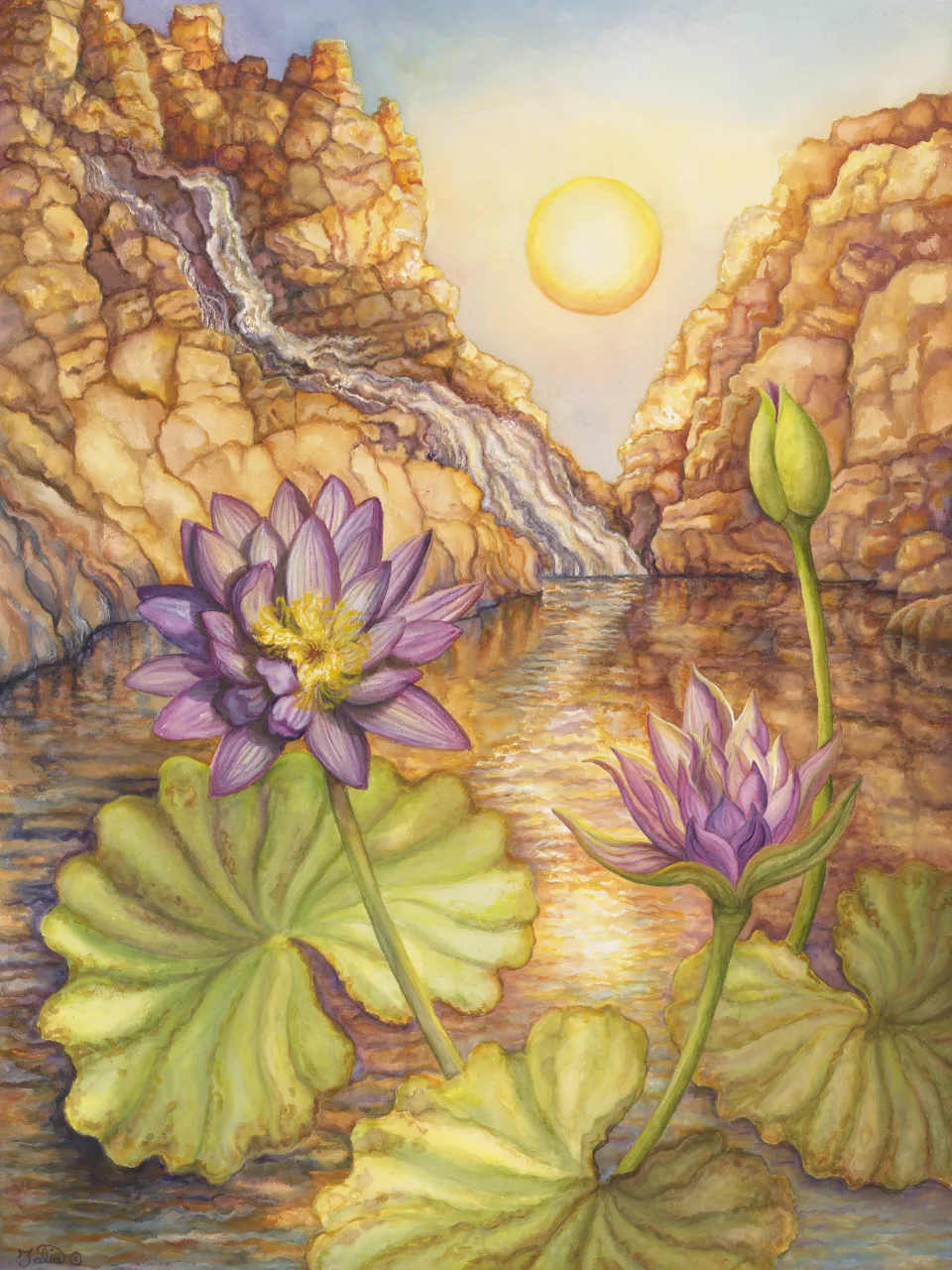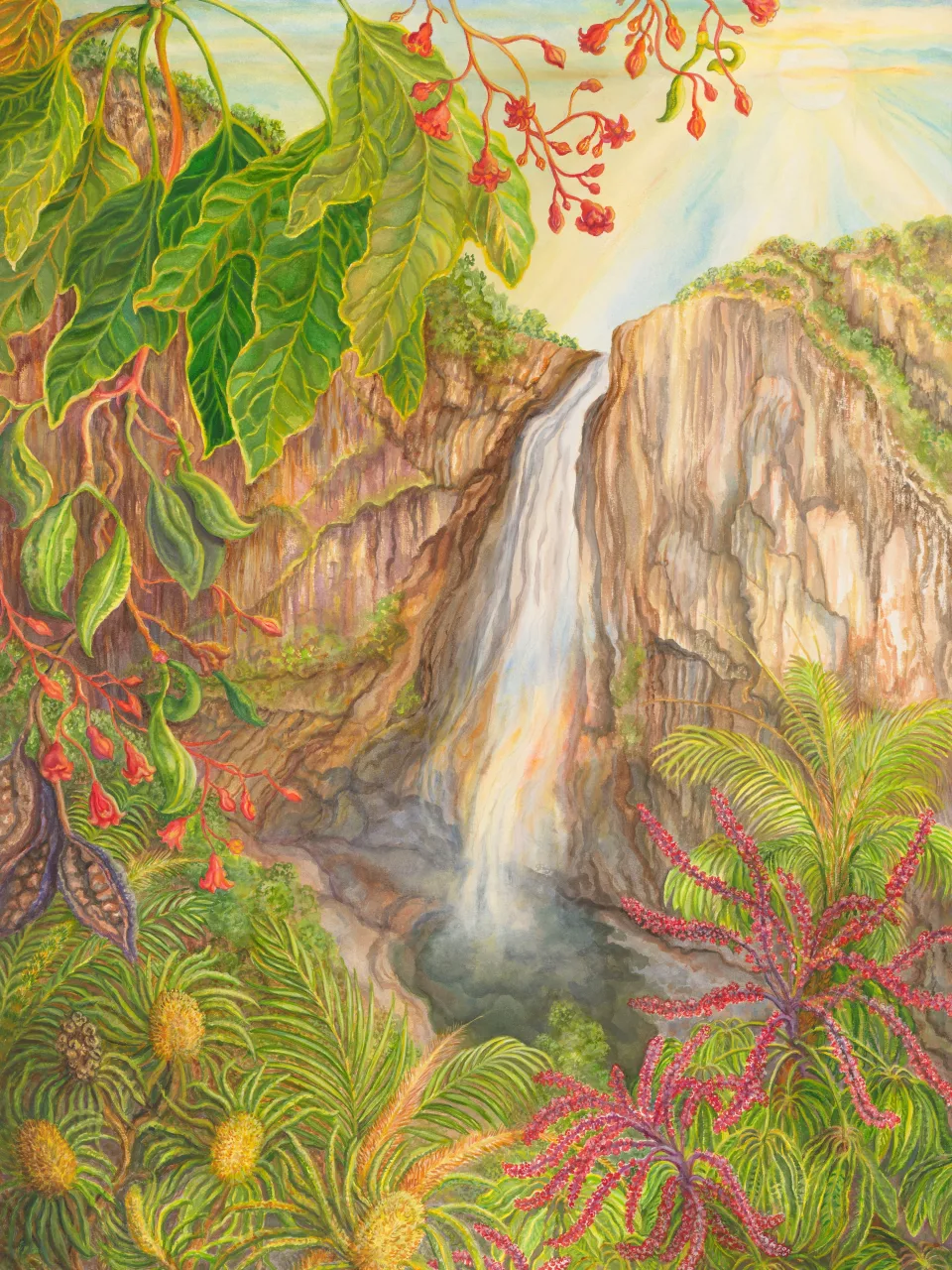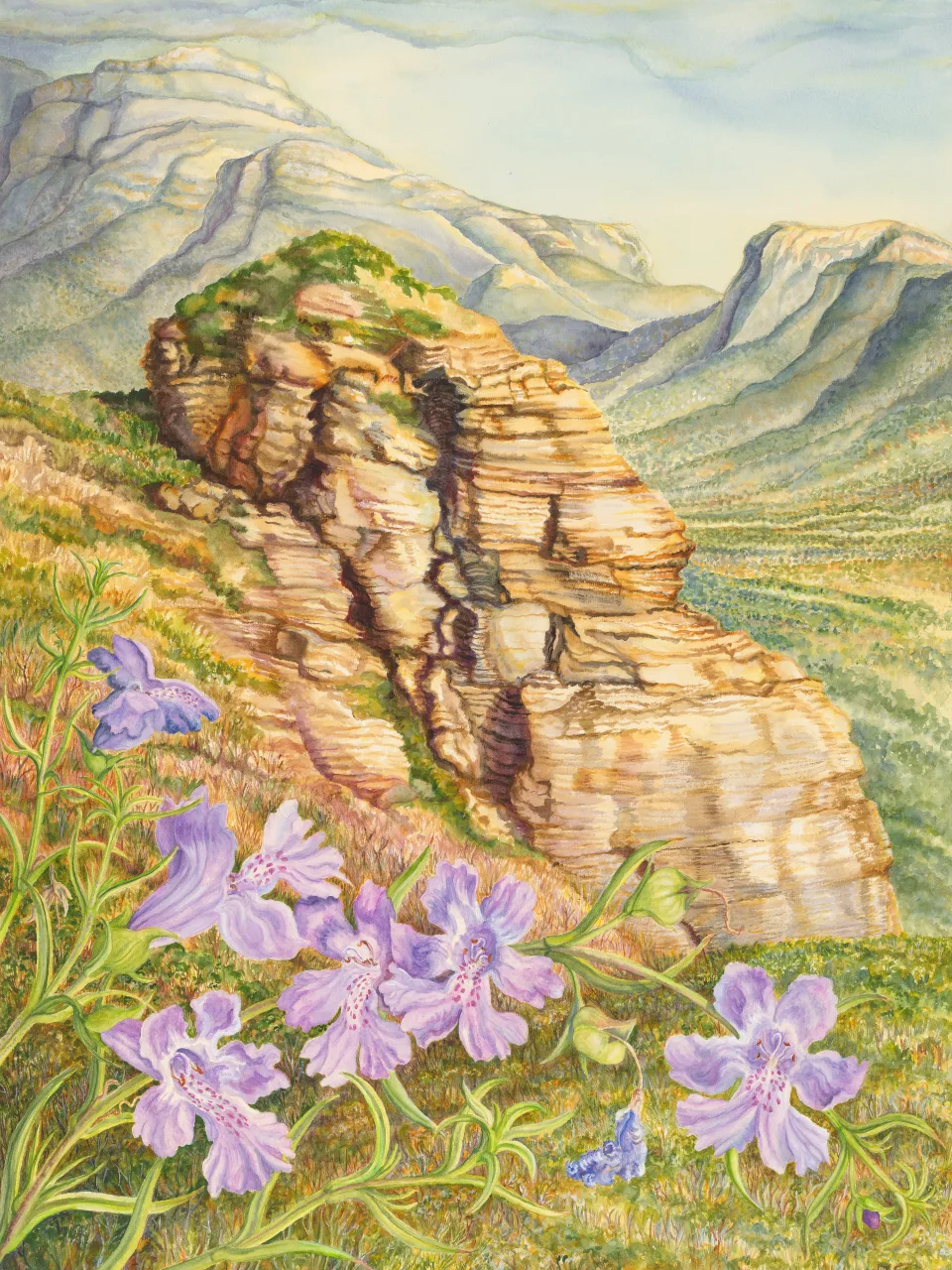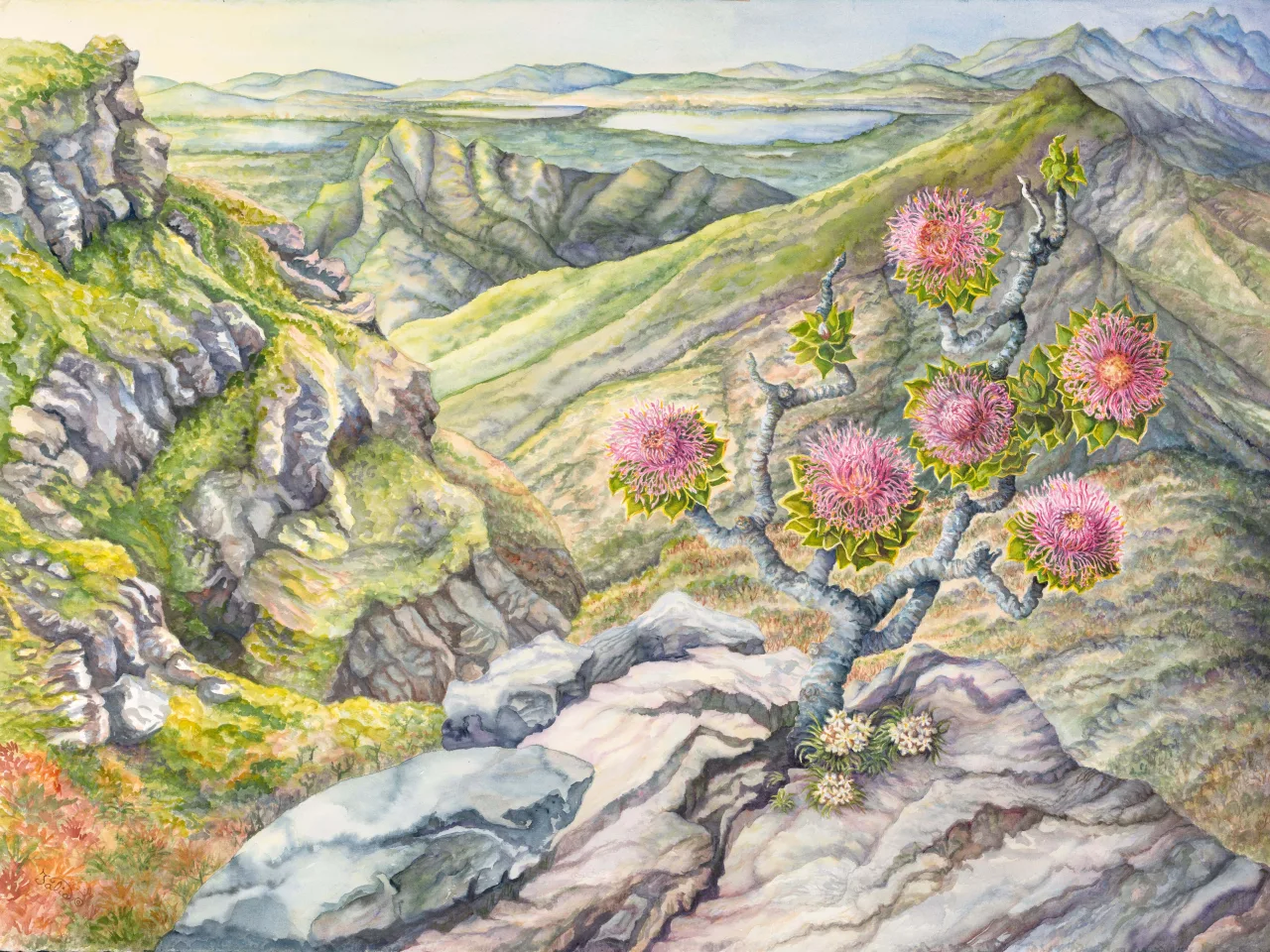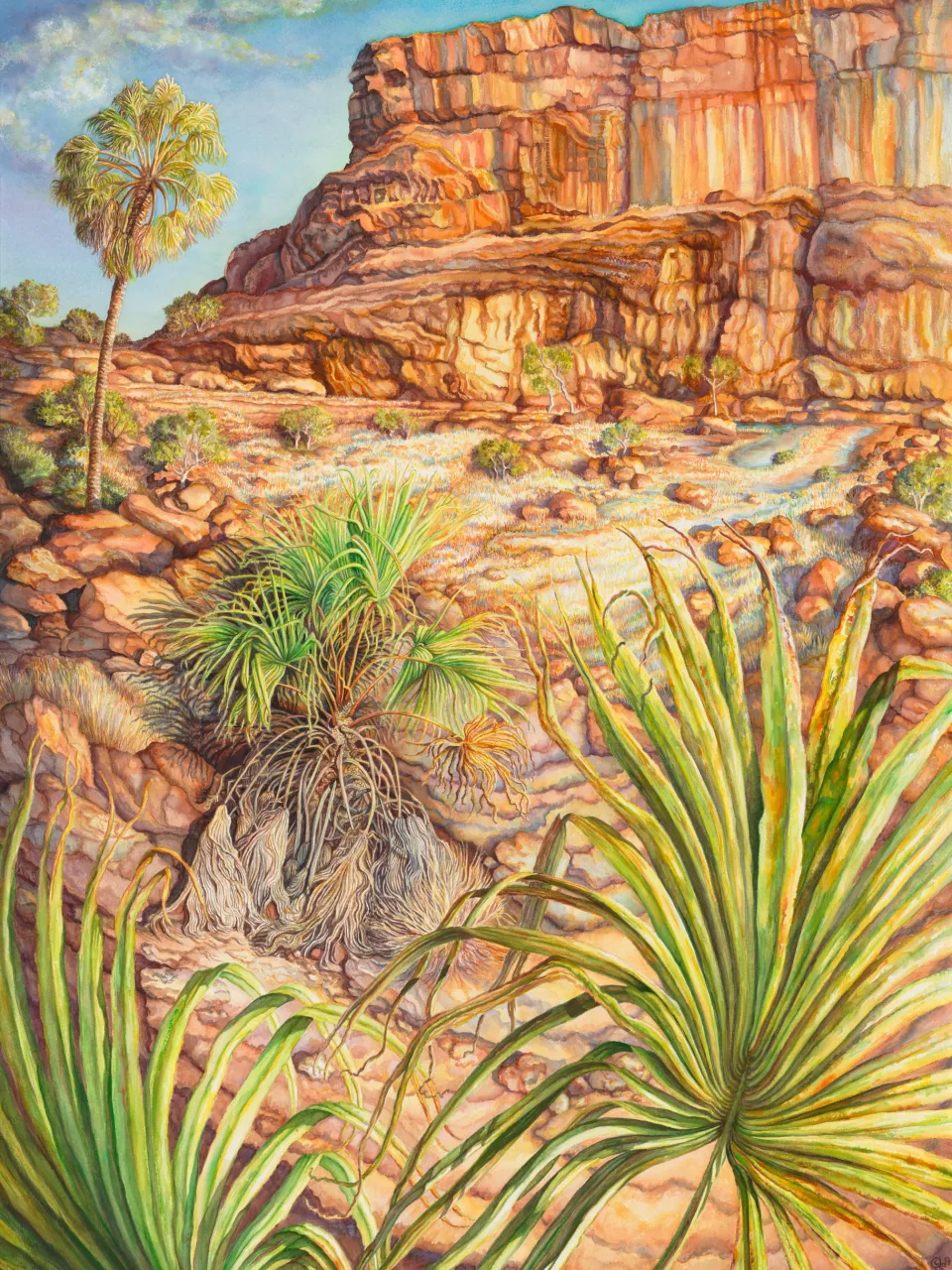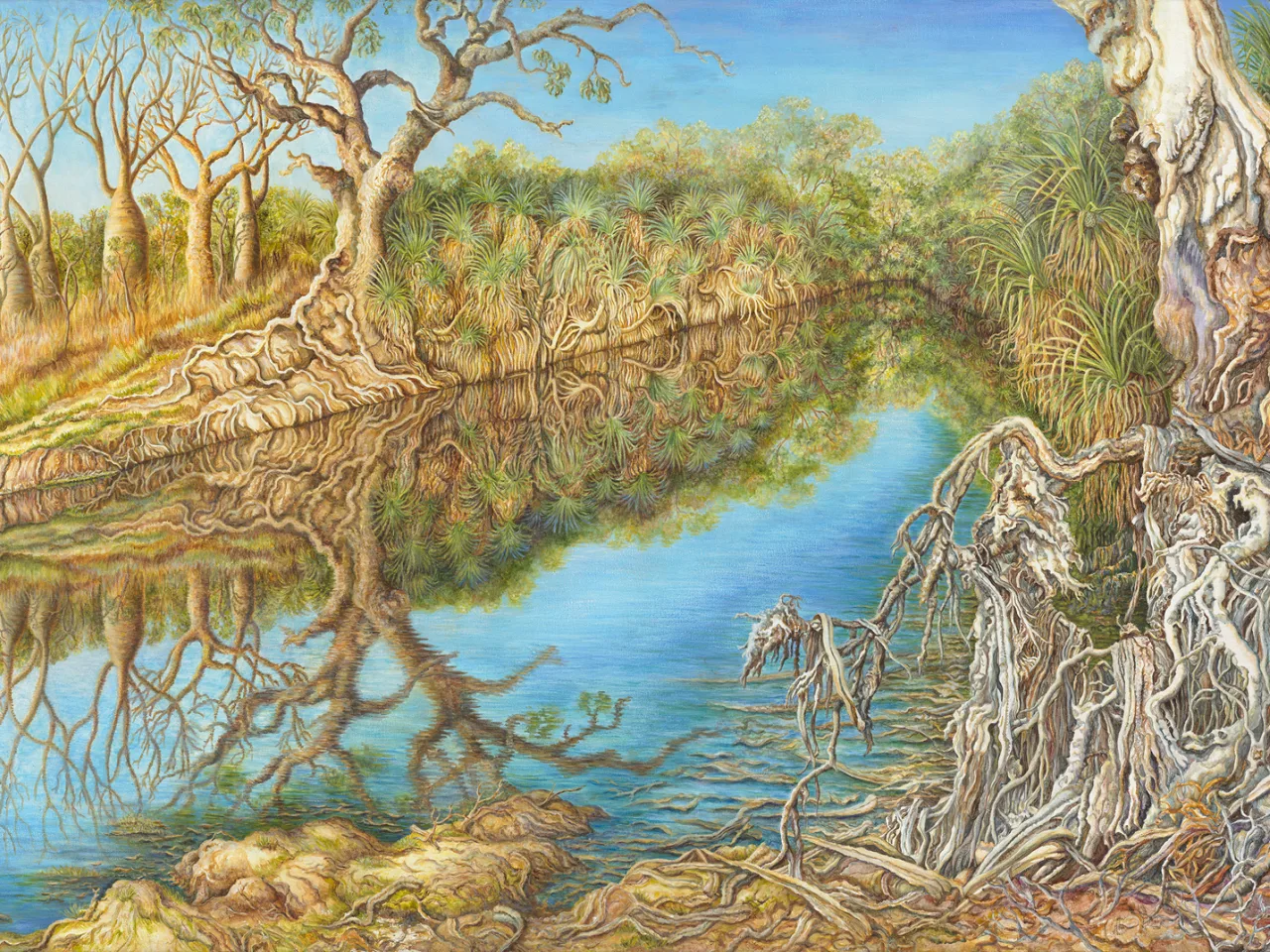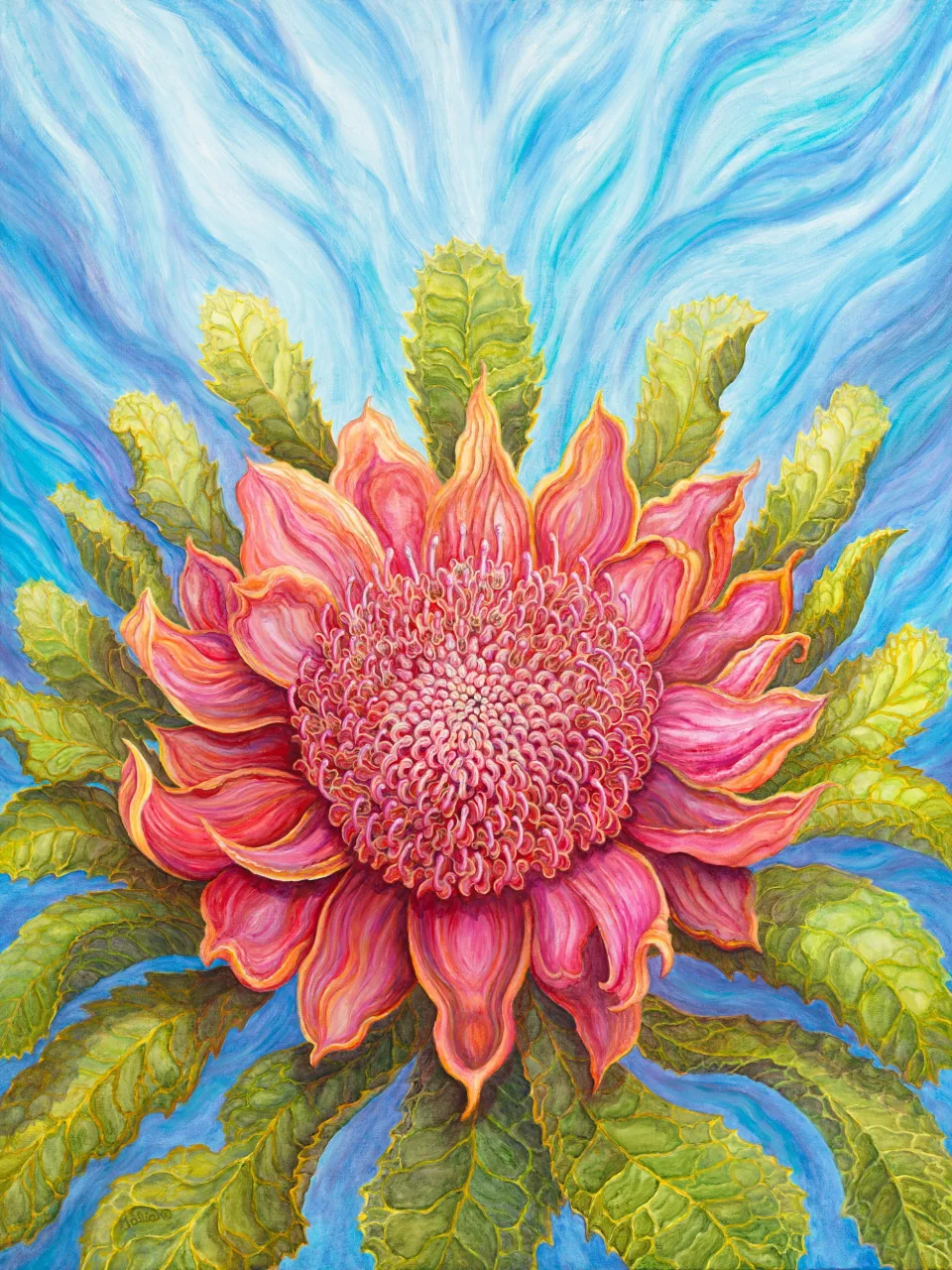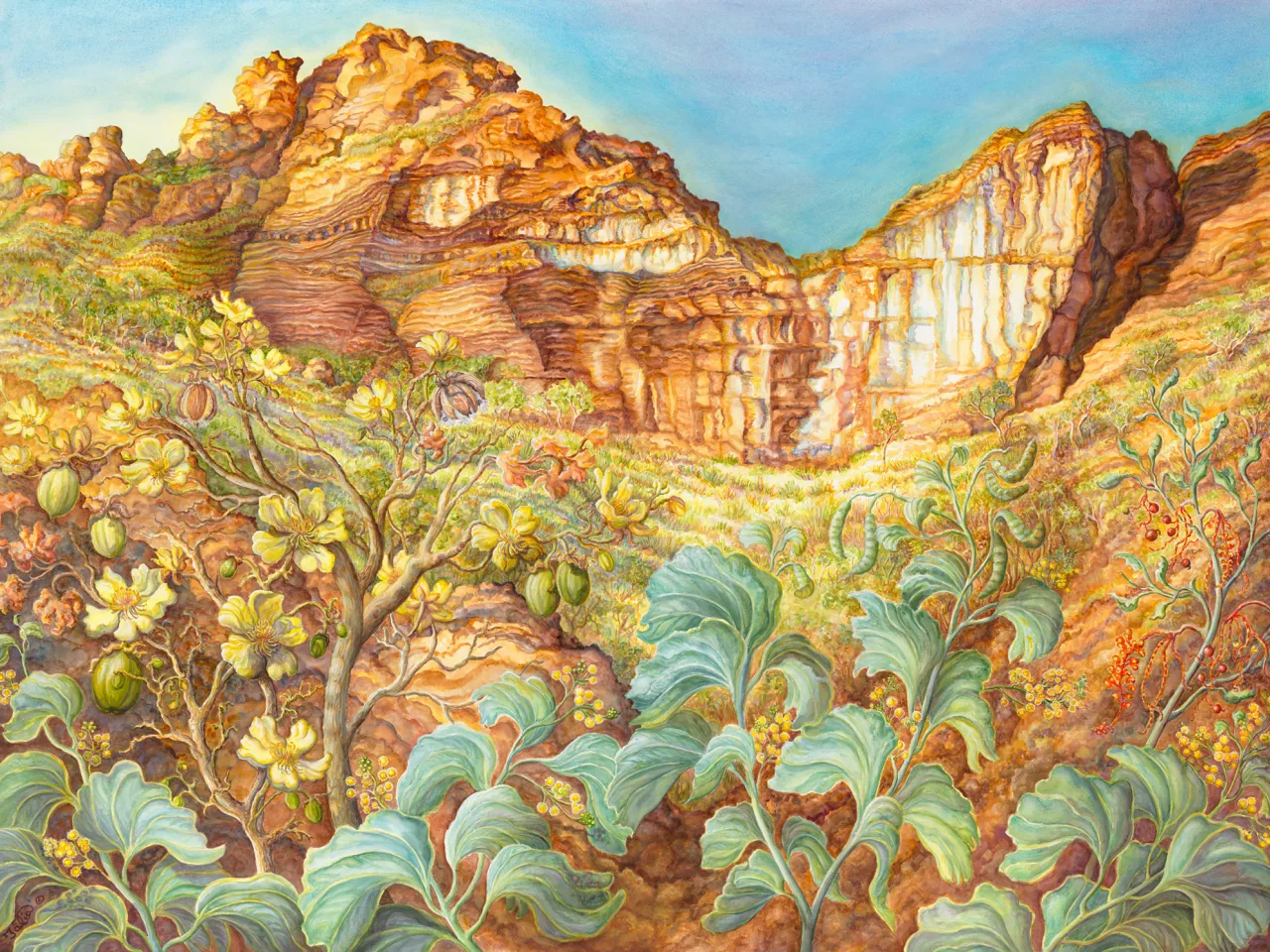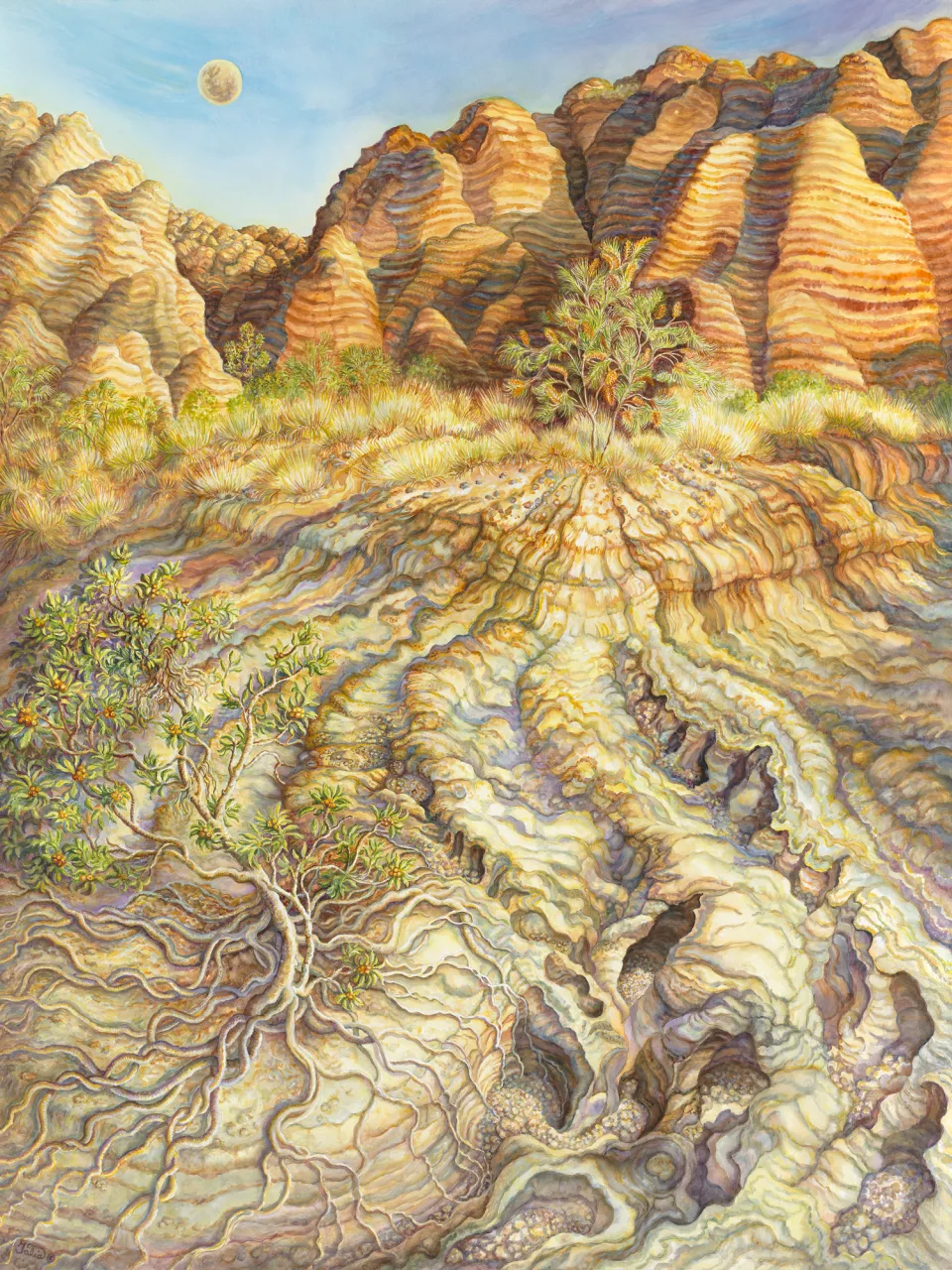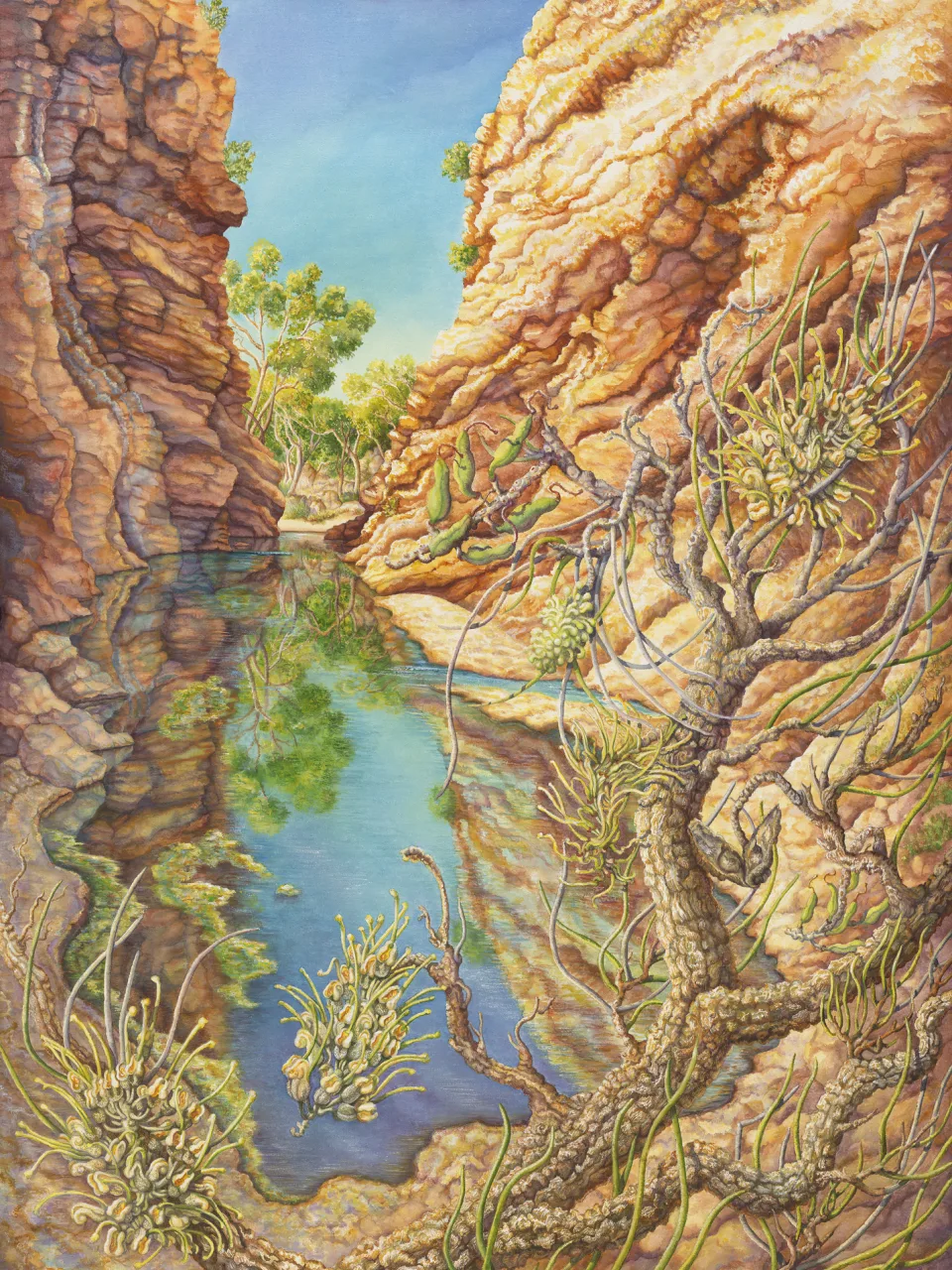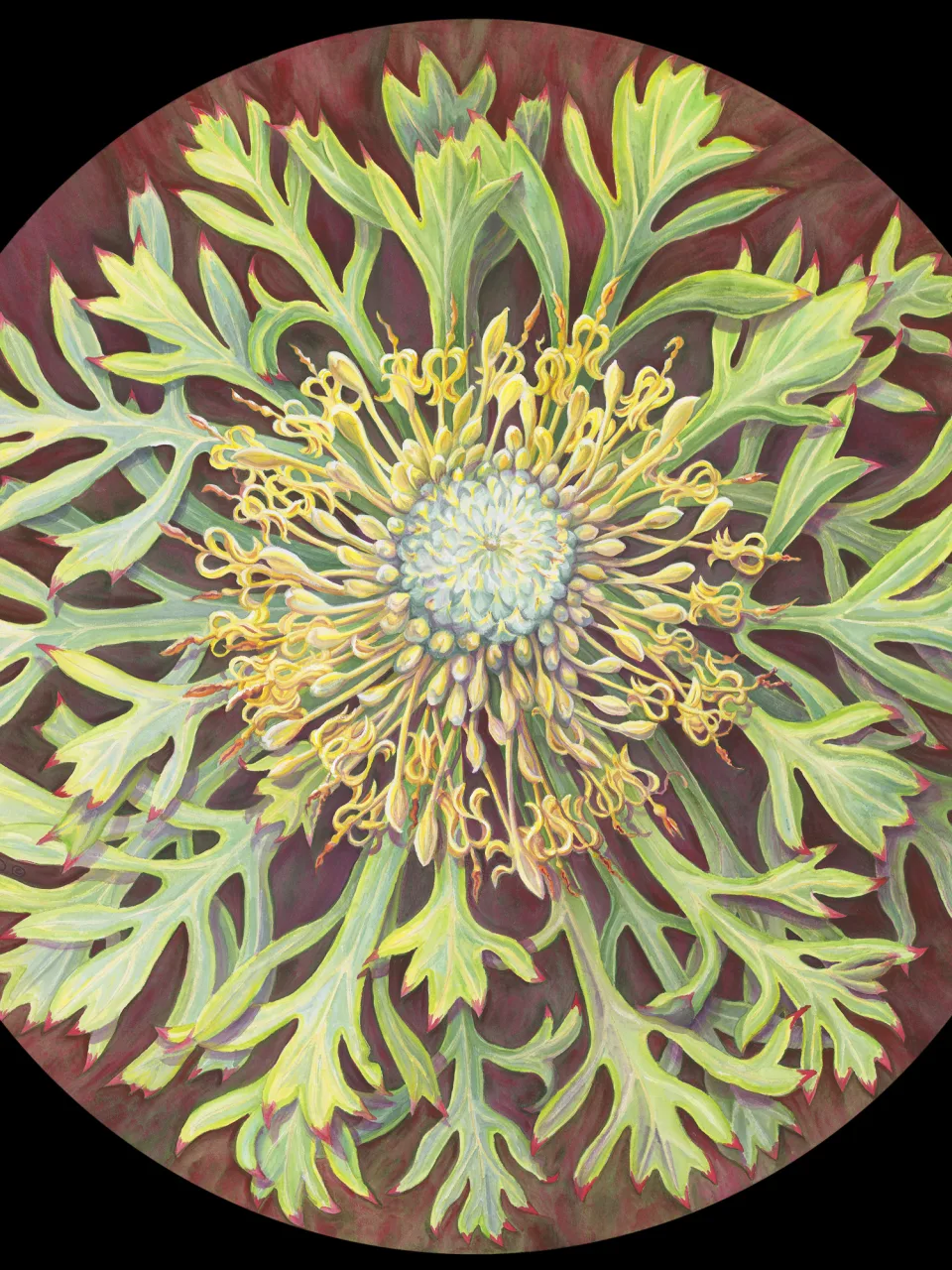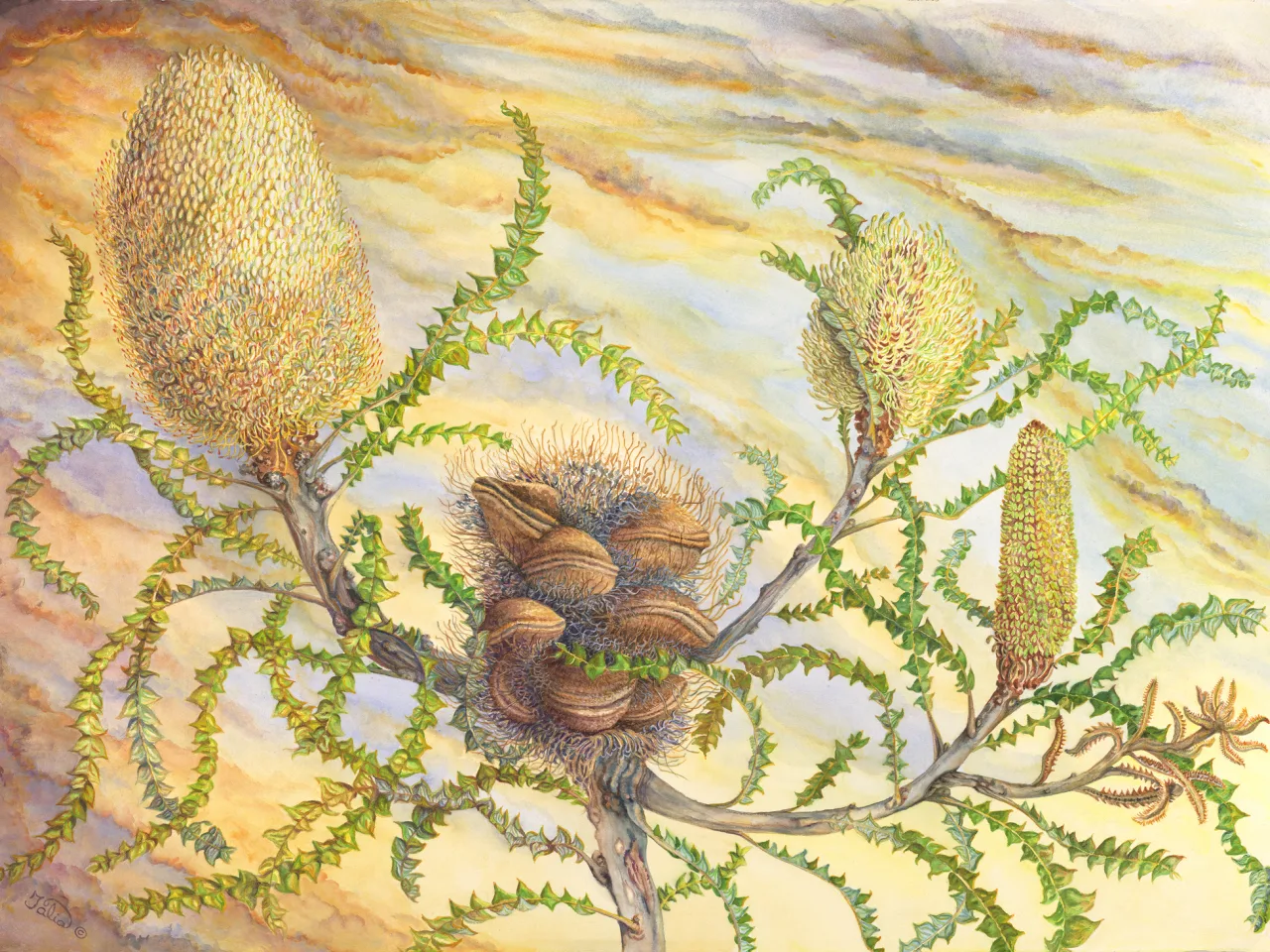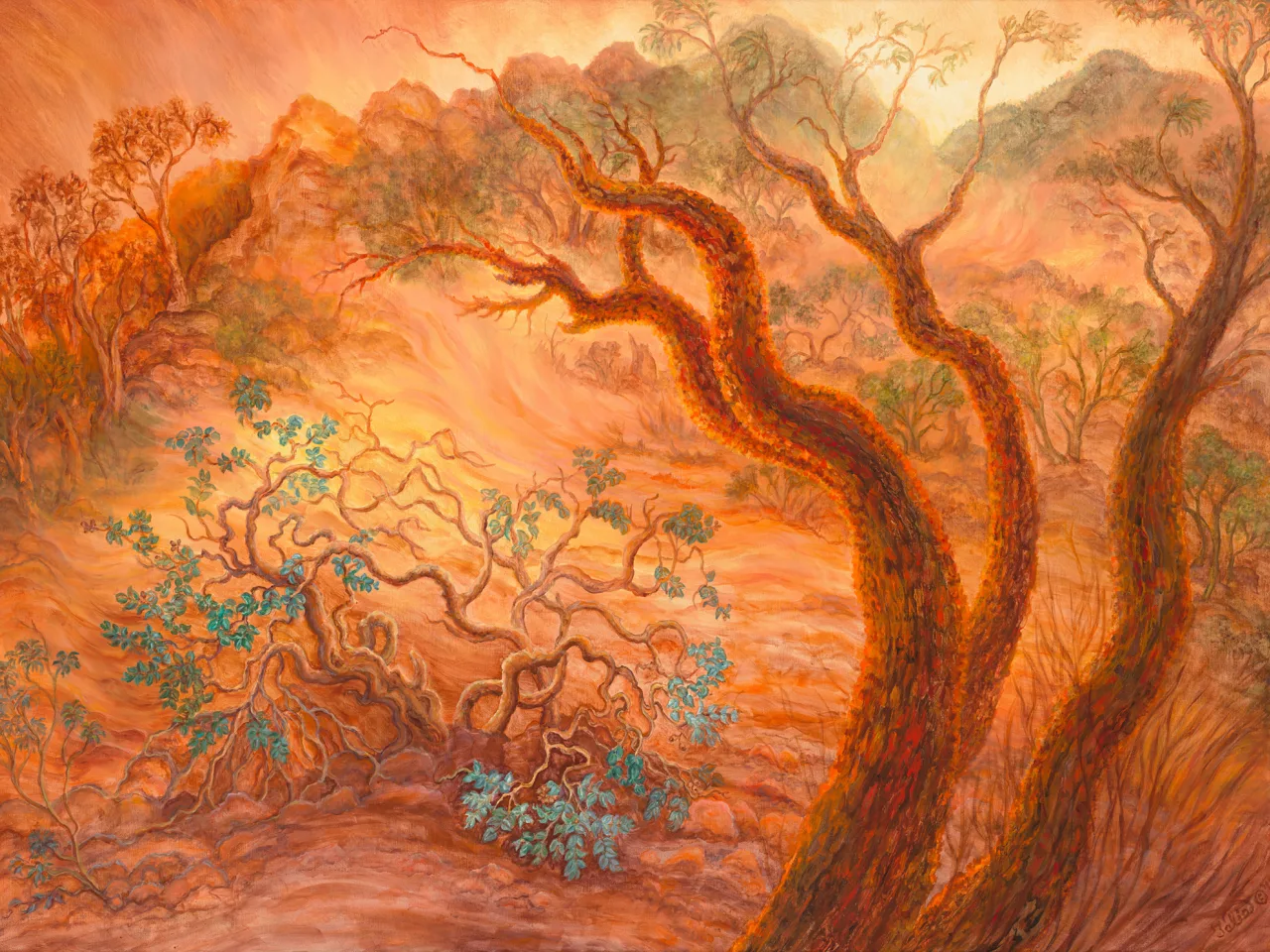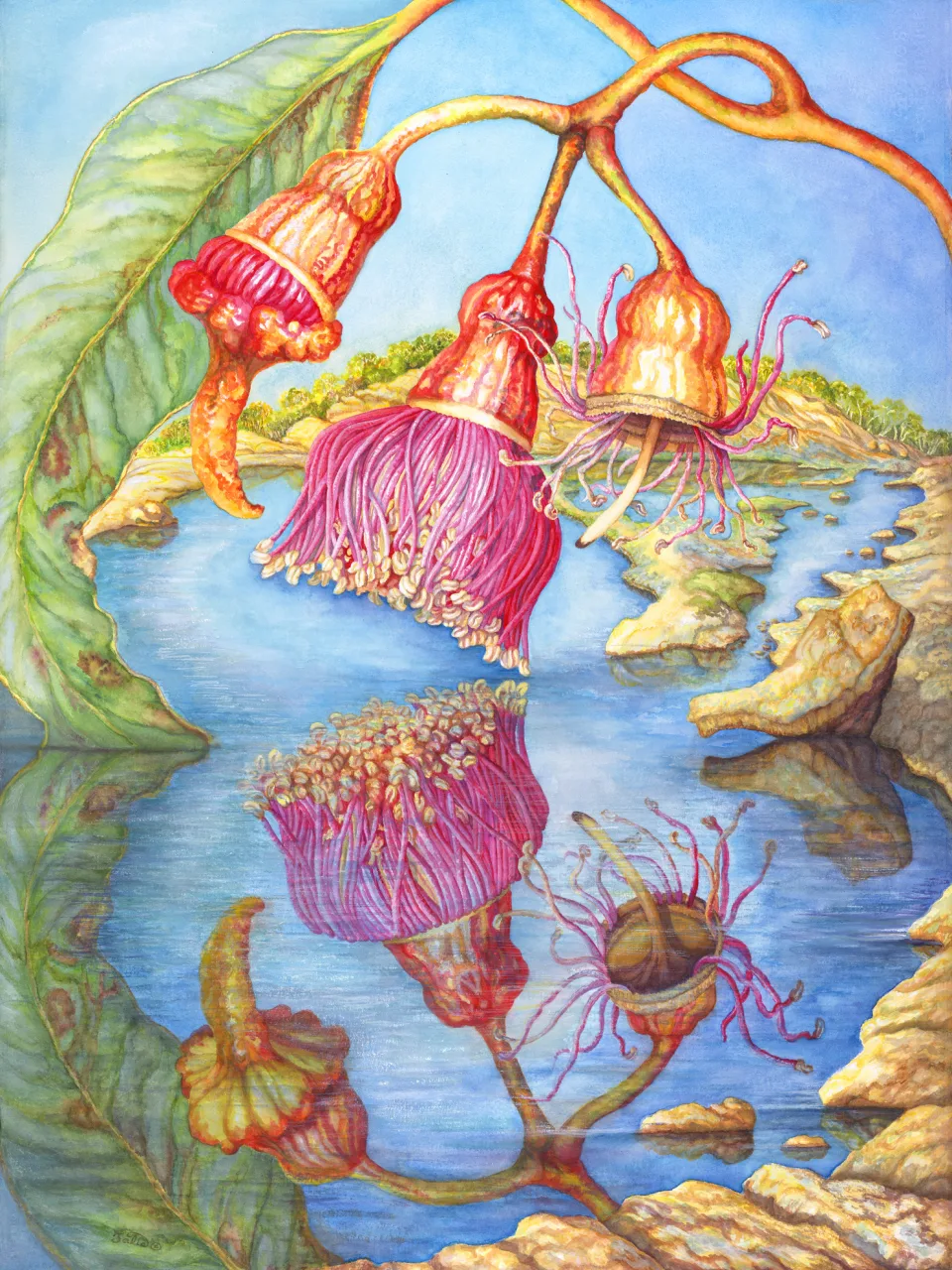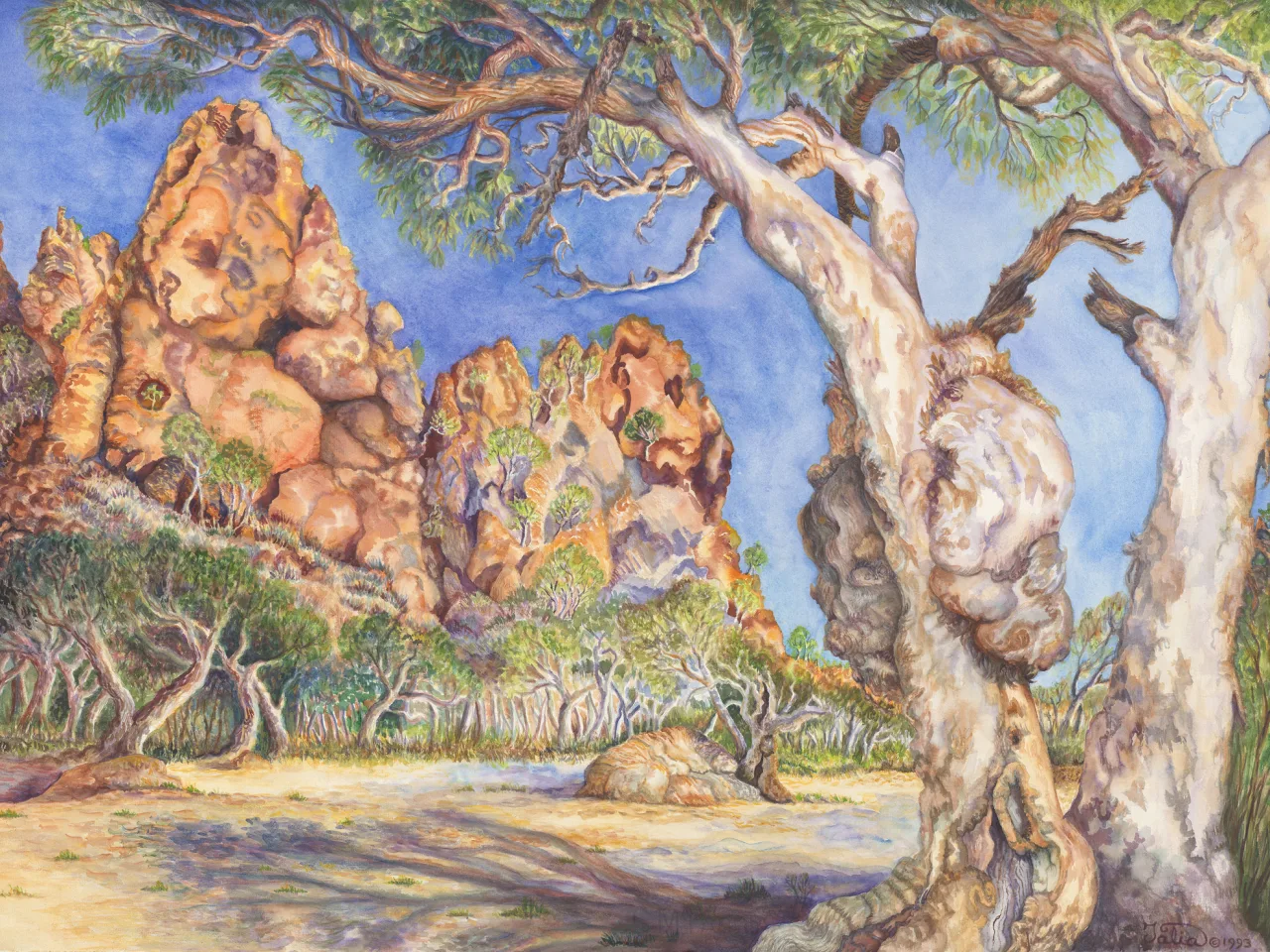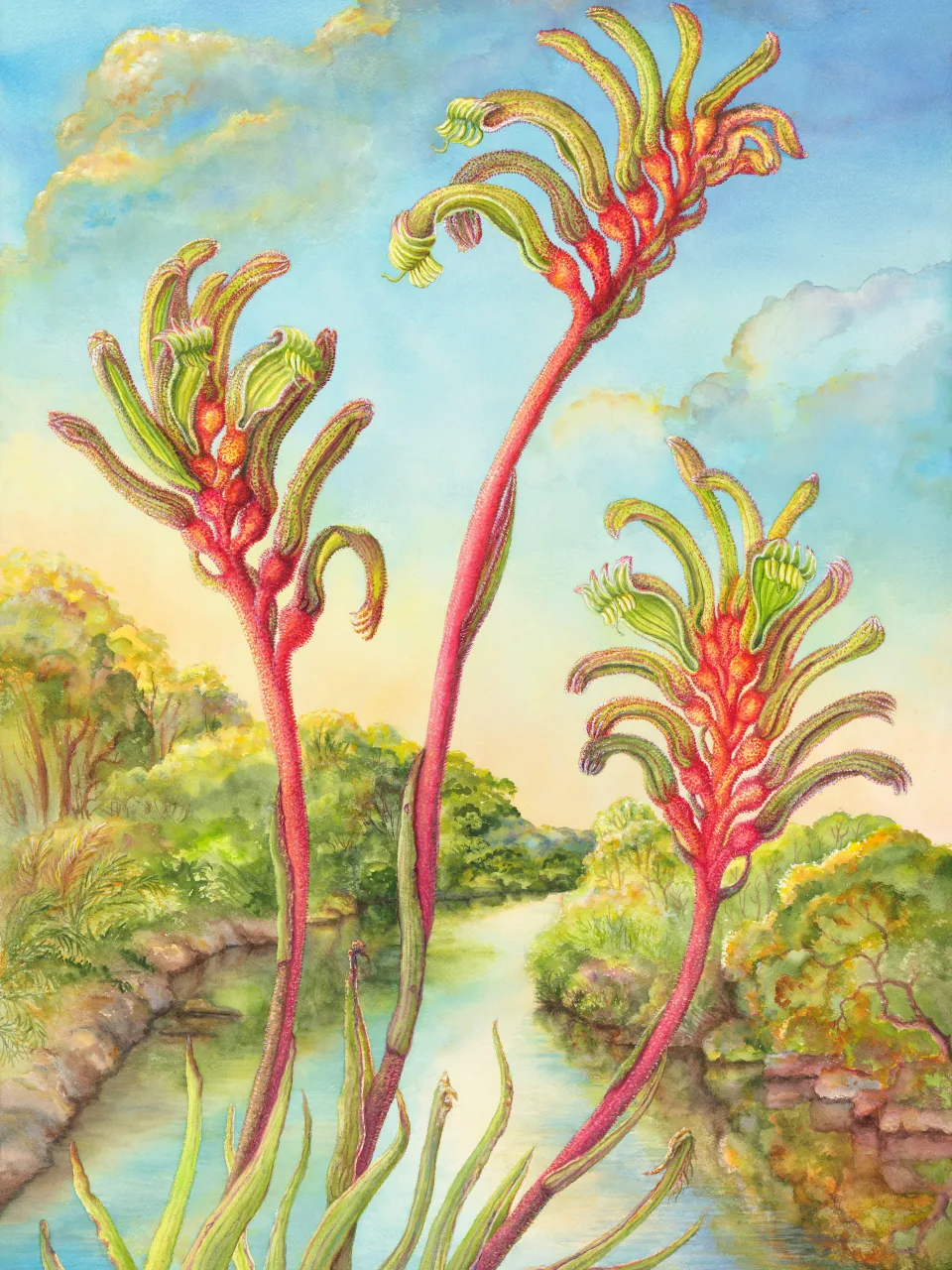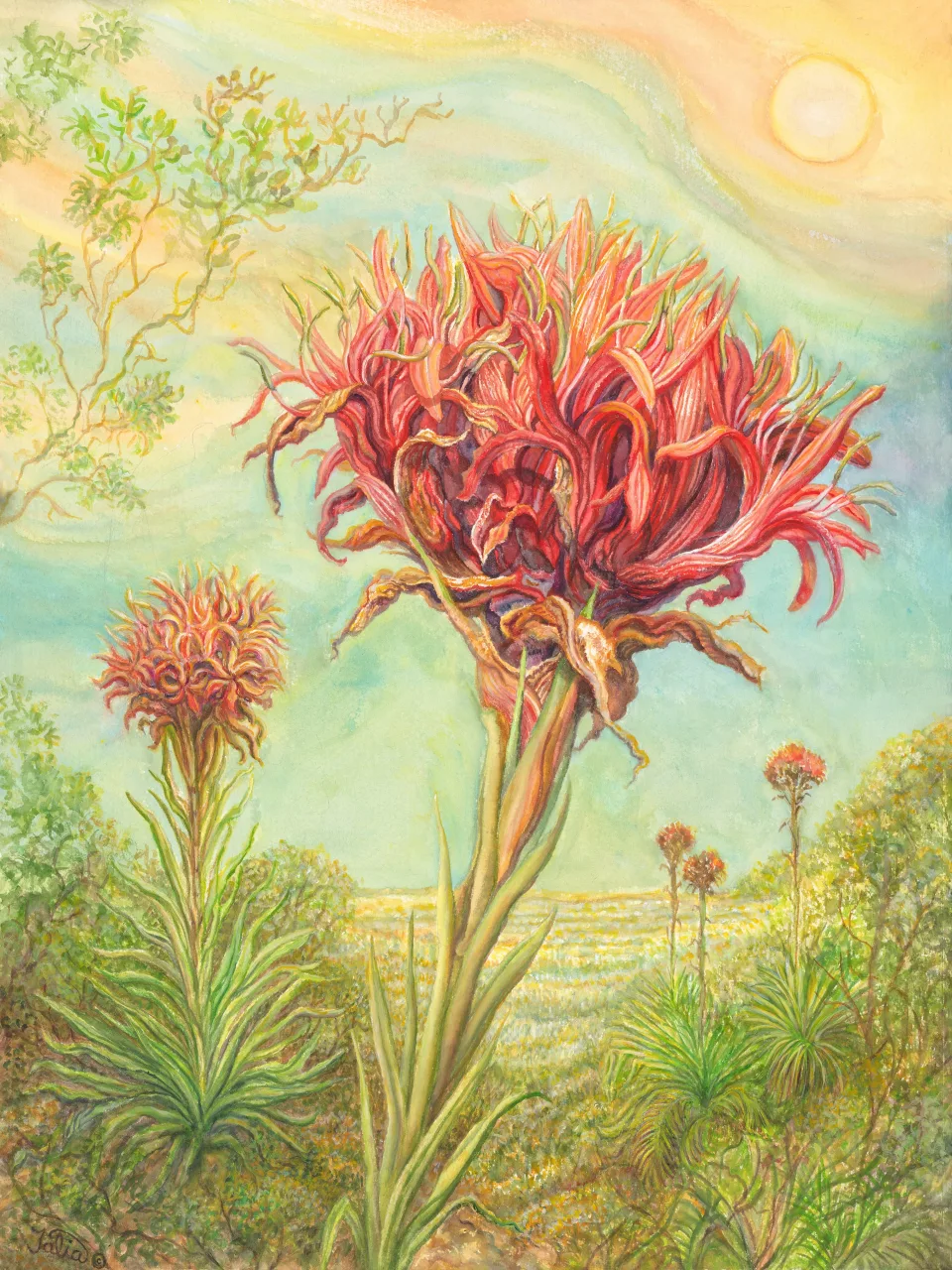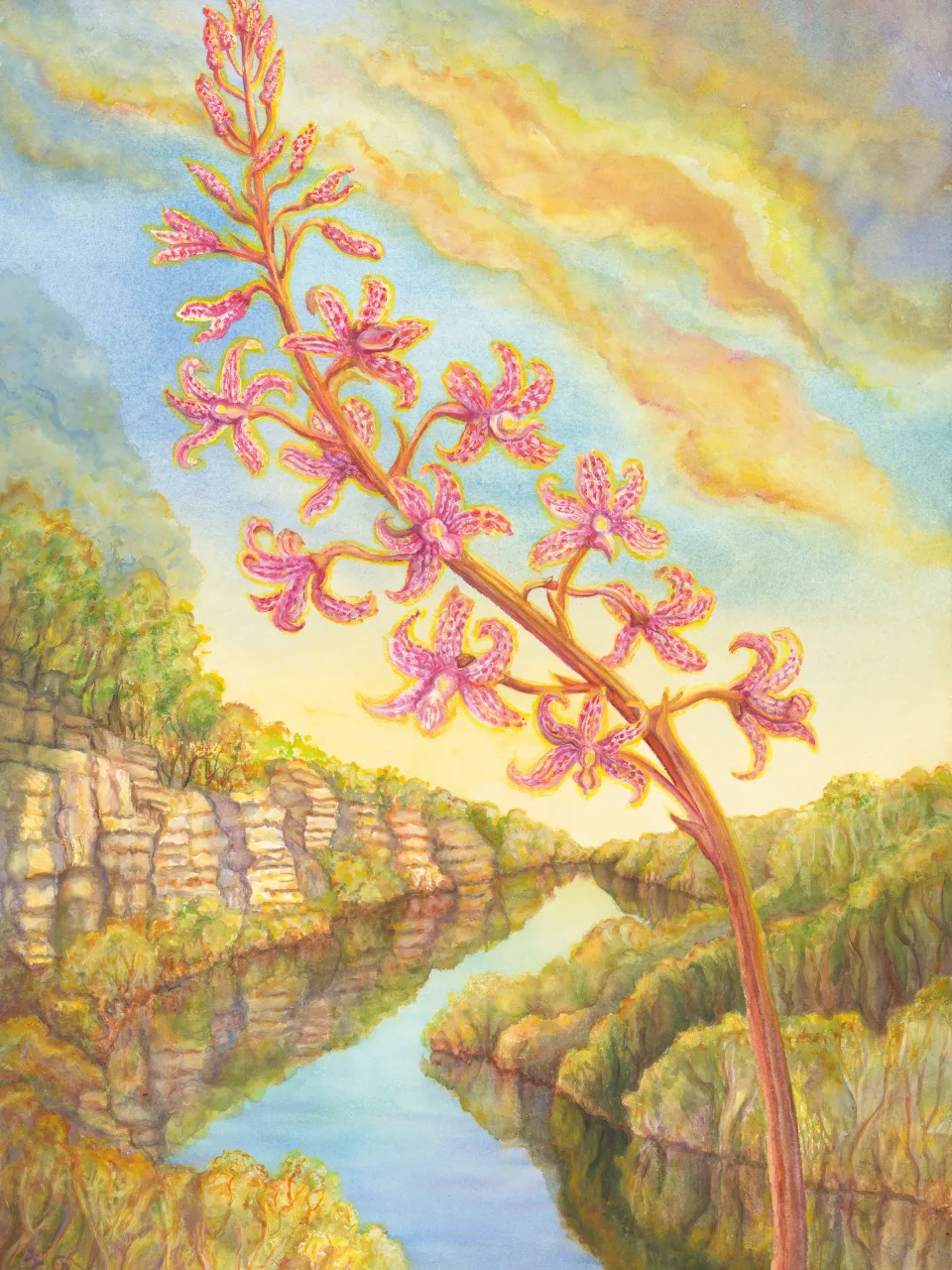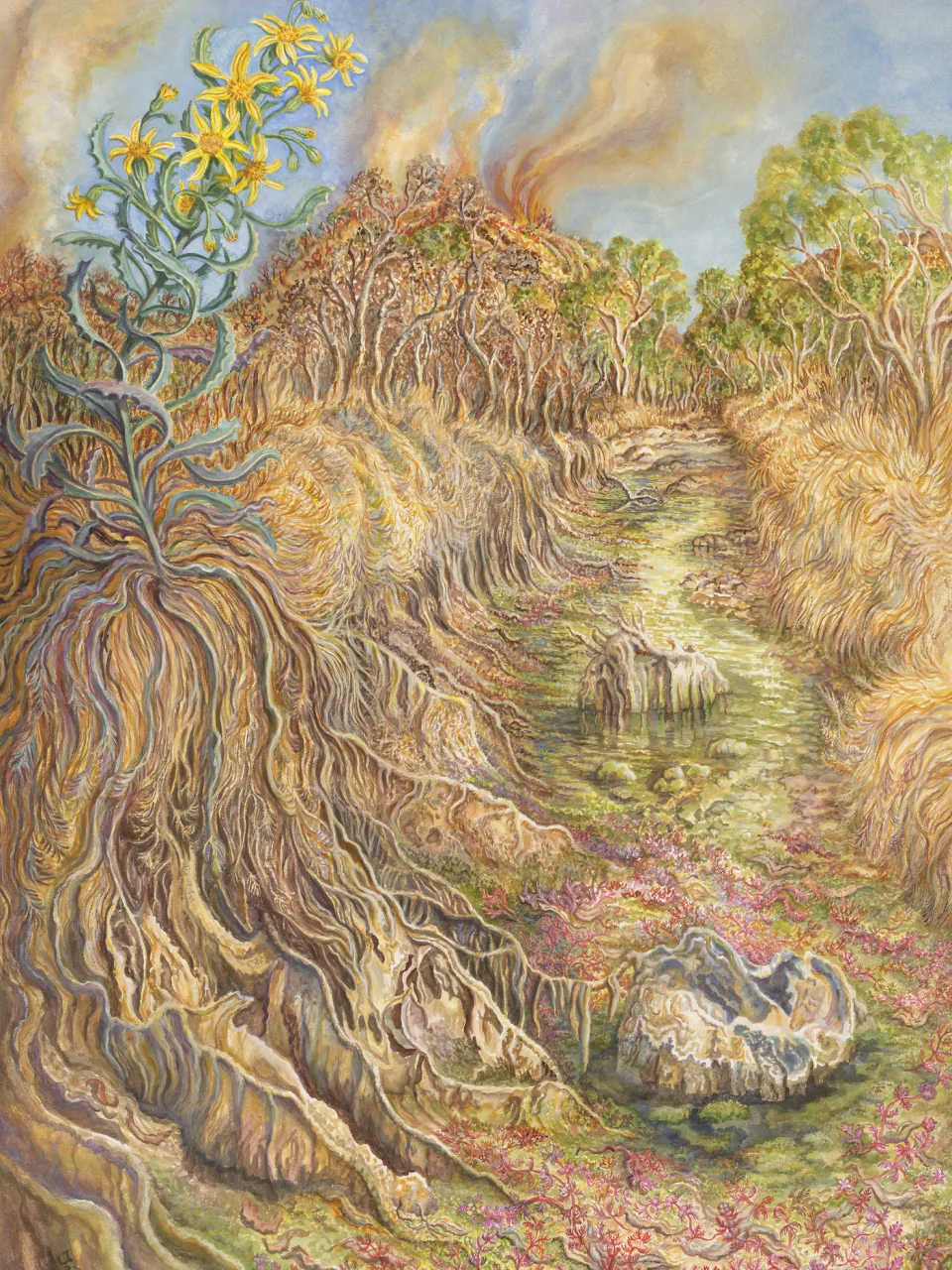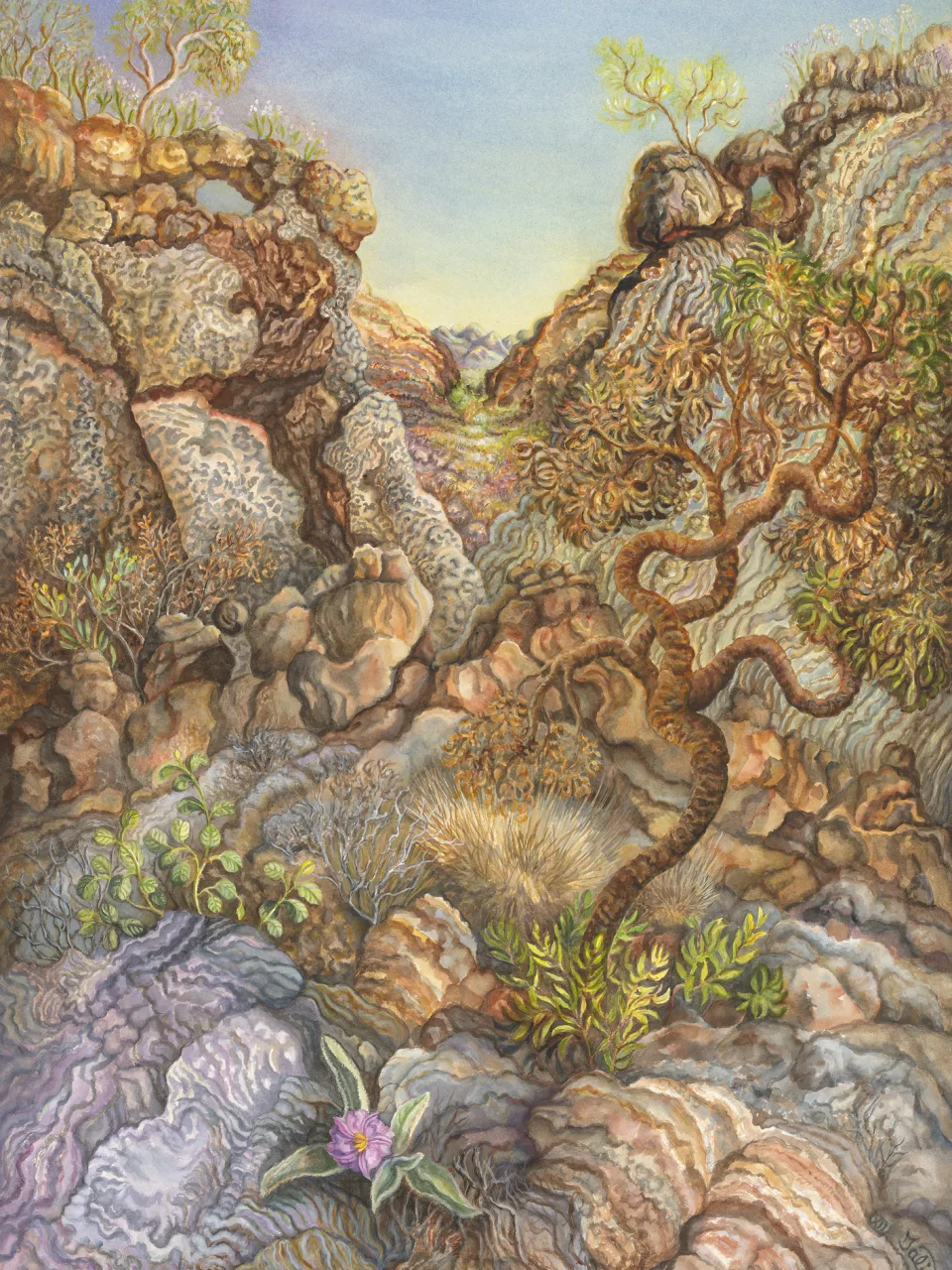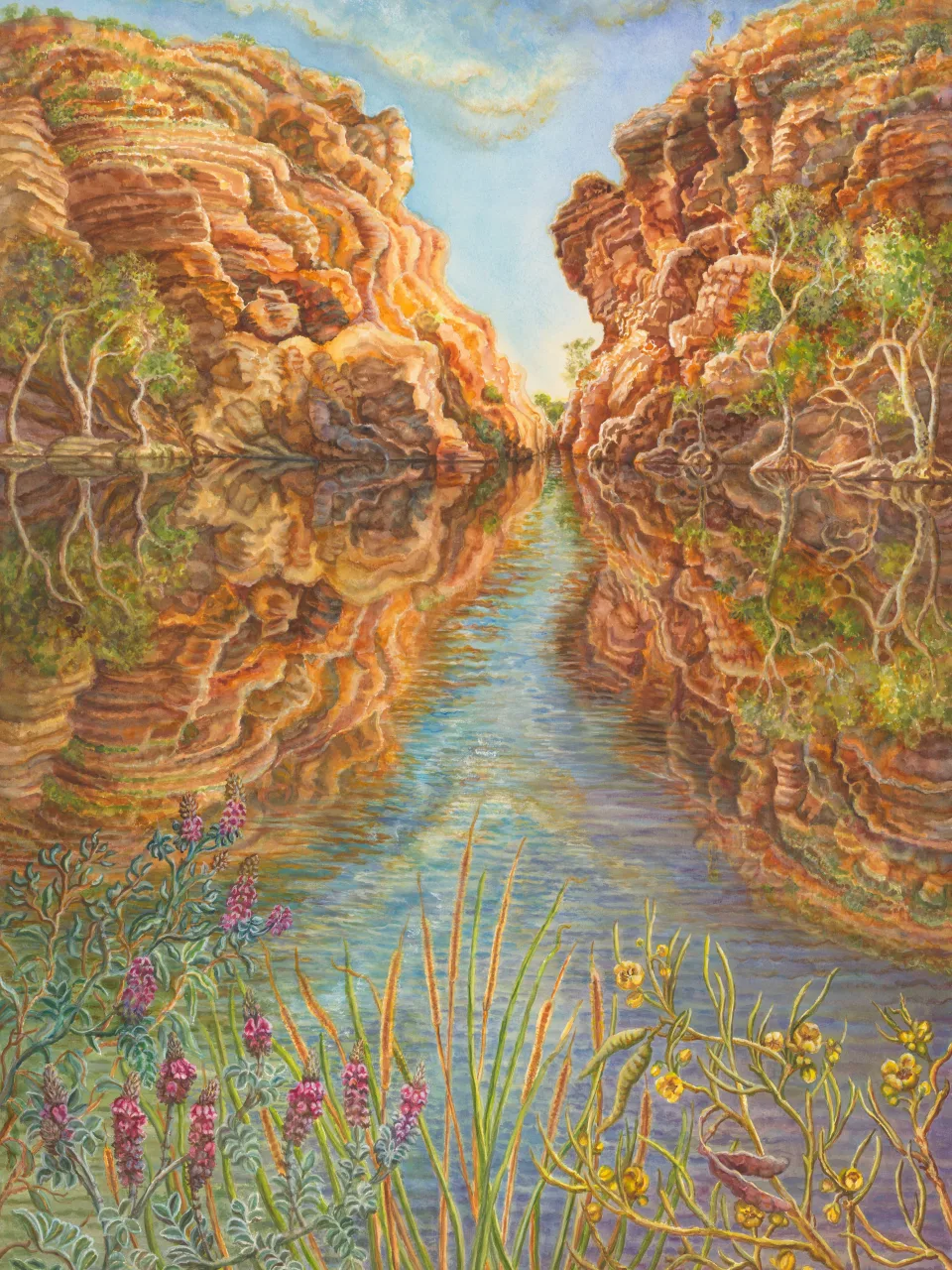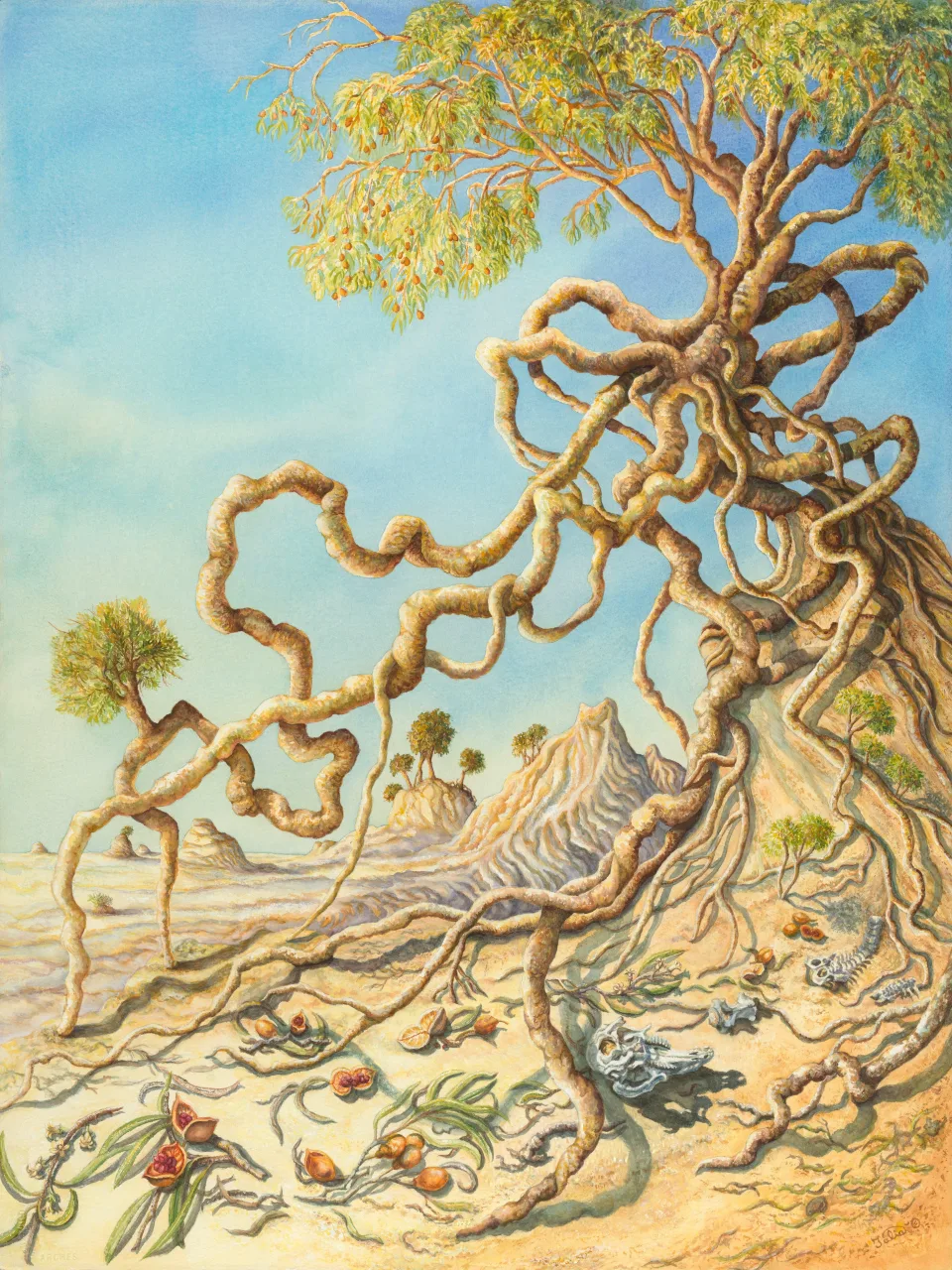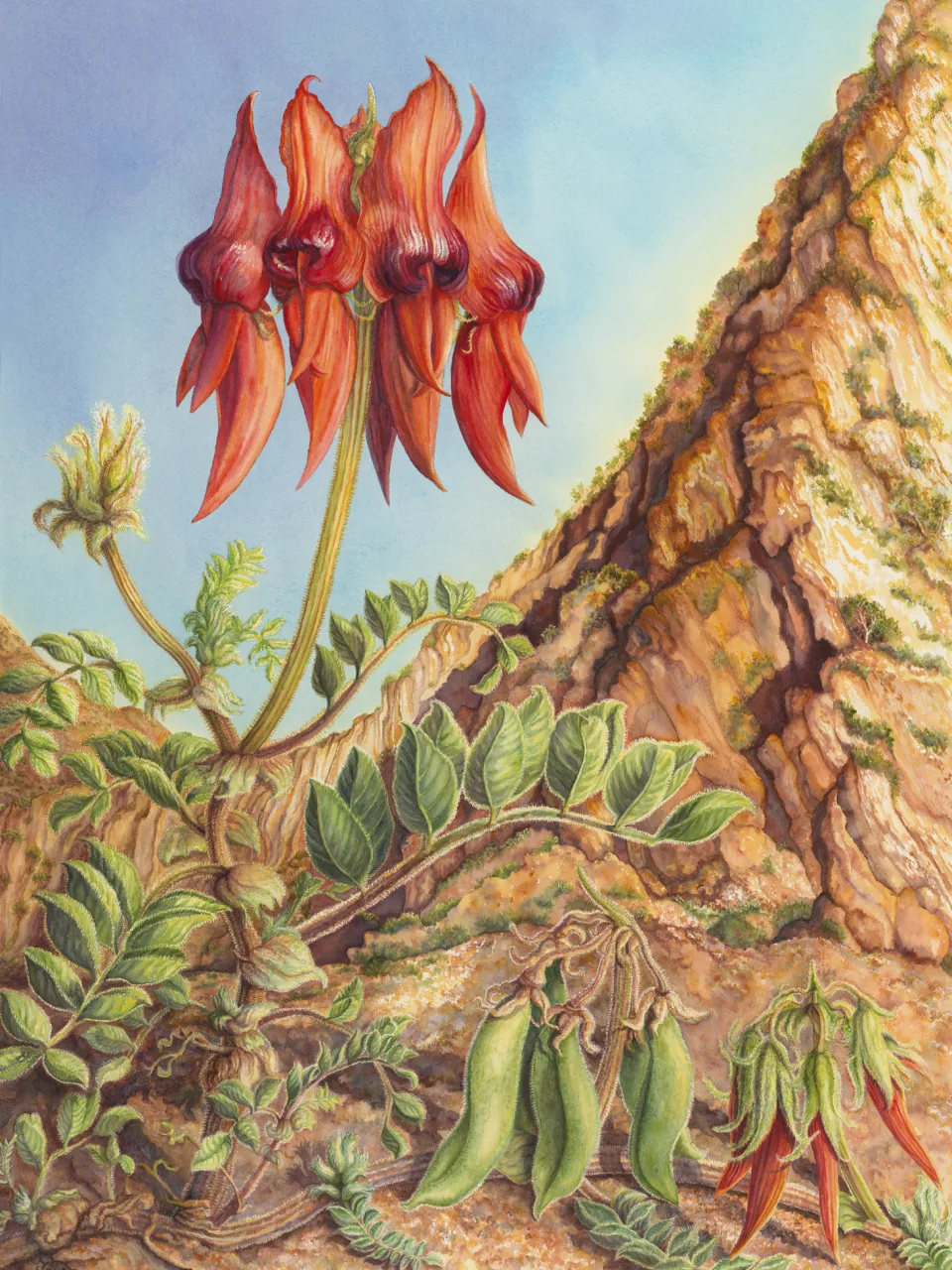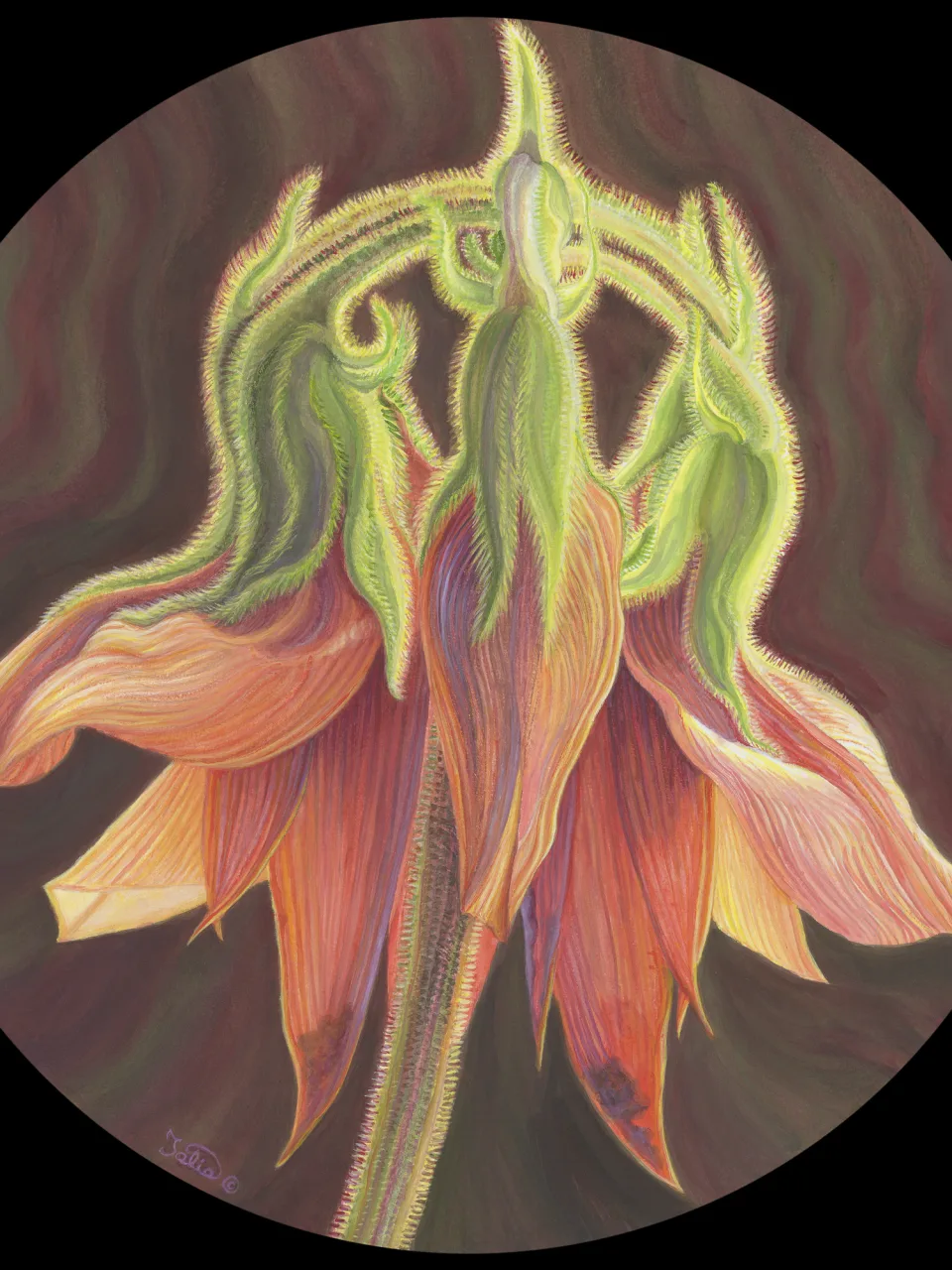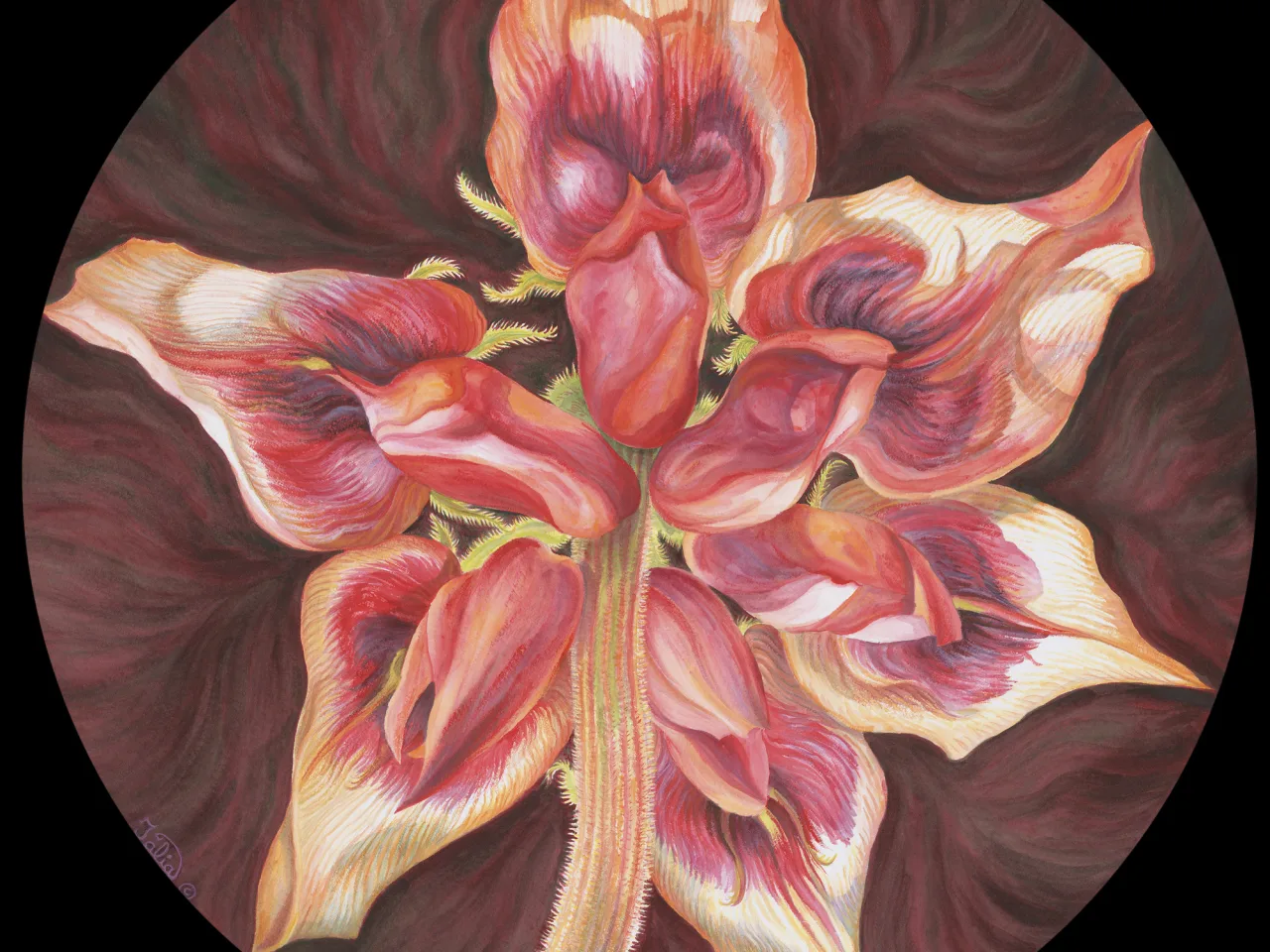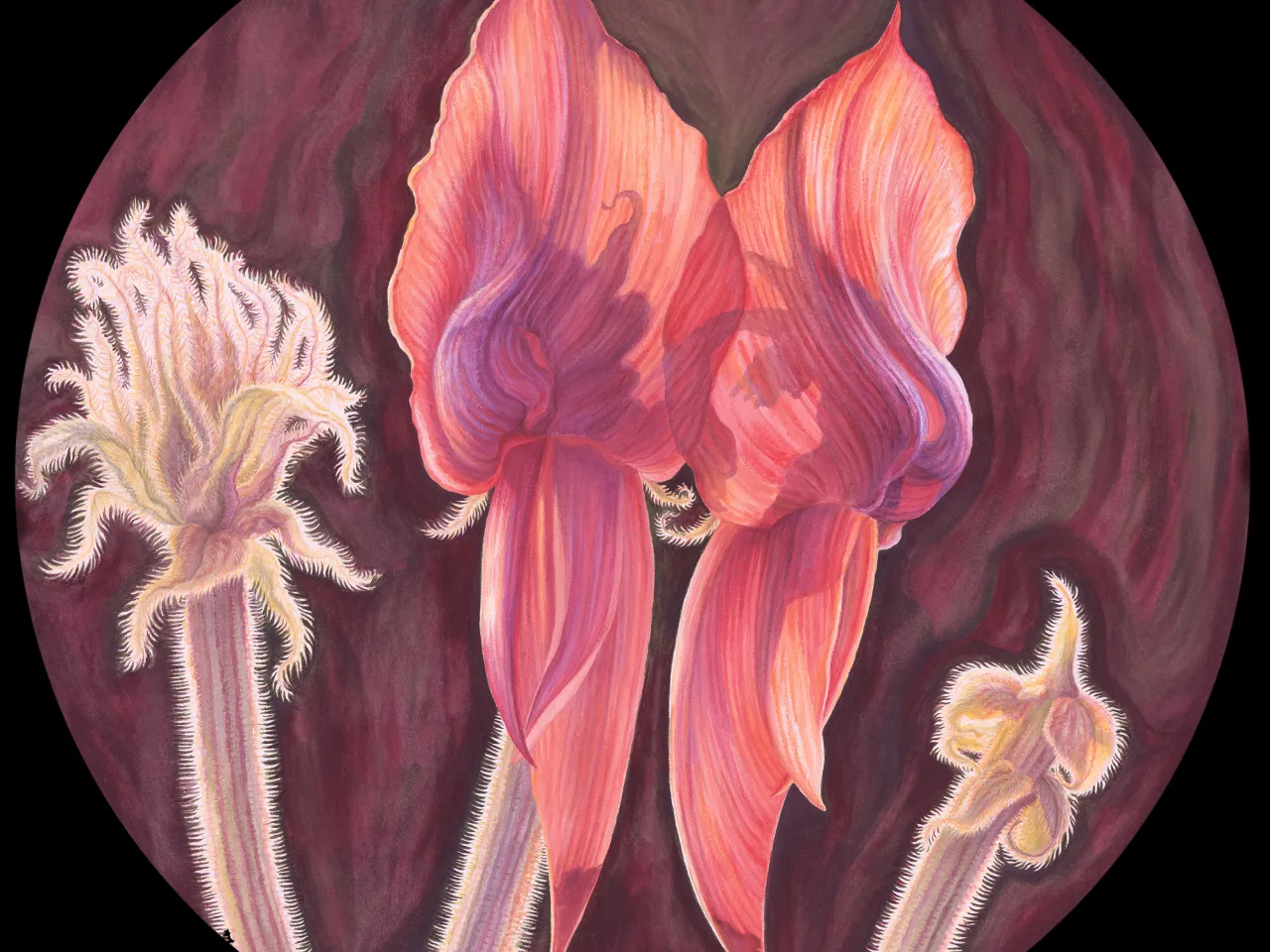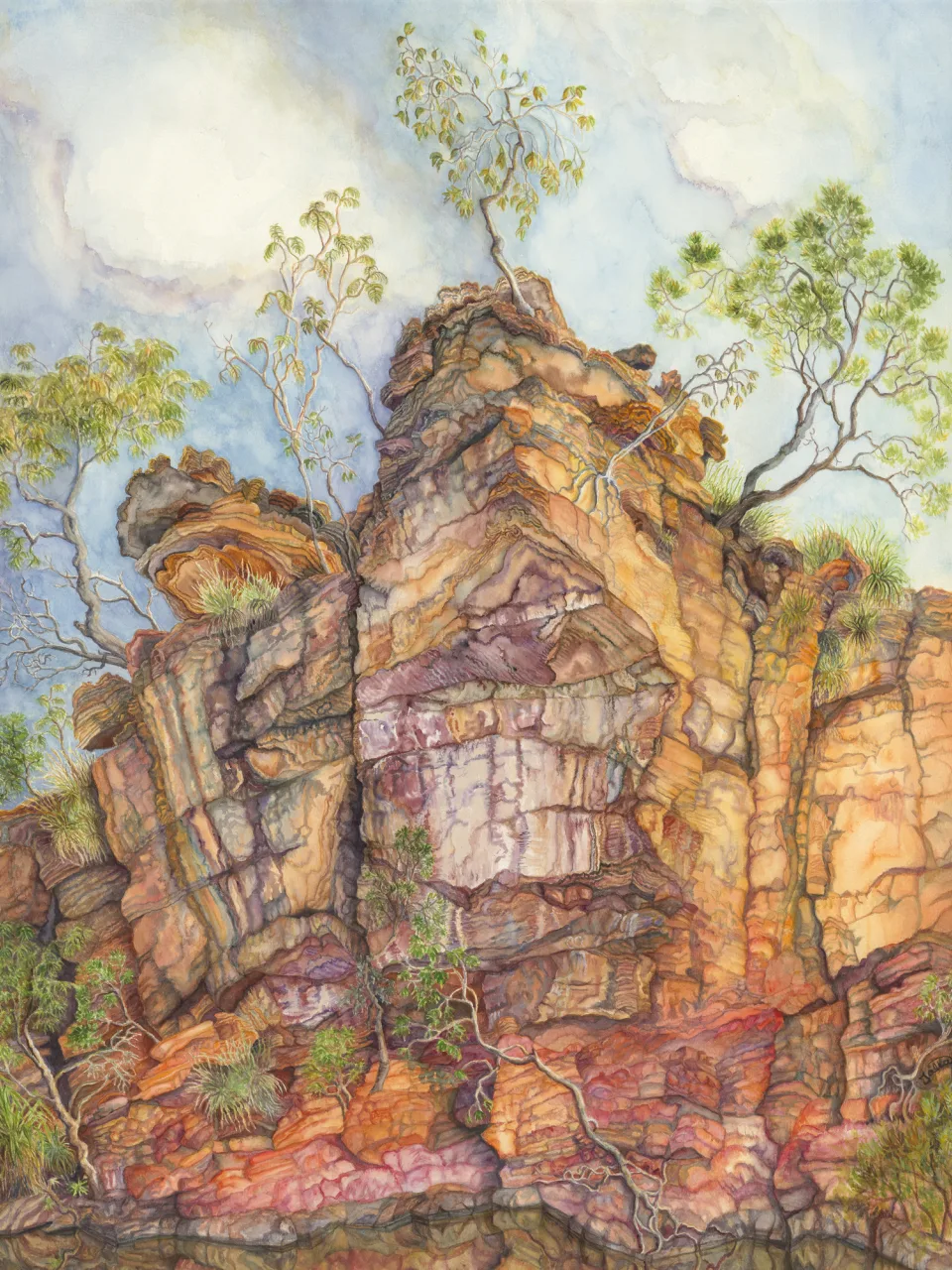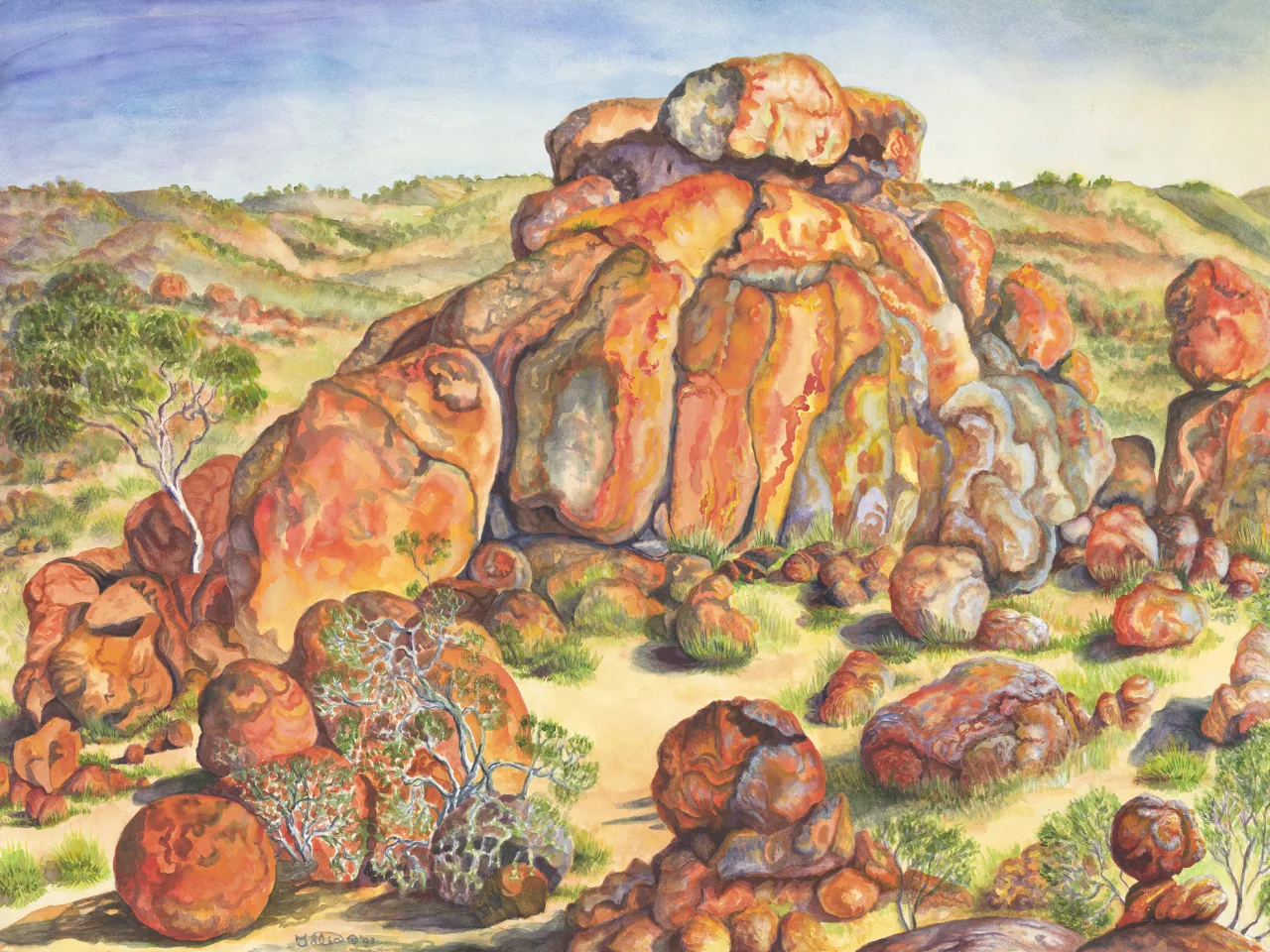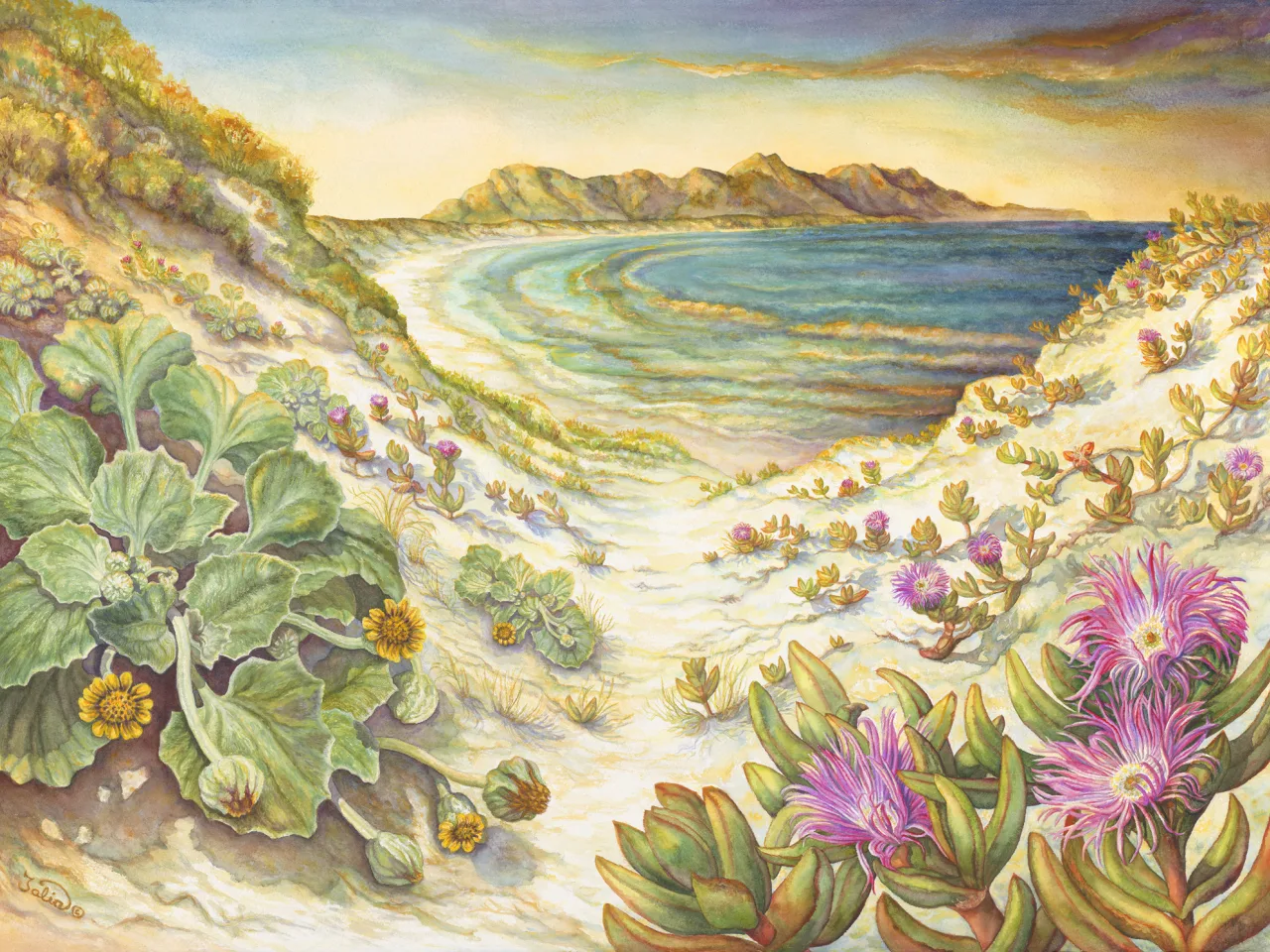Artwork 21 Deep in a Wet Tropical Rainforest
Section 17
Gondwanan Flora of the Wet Tropical Rainforest
Queensland
- 1. Bowenia spectabilis (Zamia fern)
- 2. Castanospermum australe (black bean tree)
- 3. Cissus hypoglauca (native grape)
- 4. Ficus racemosa (cluster fig)
- 5. Idiospermum australiense (idiot fruit)
- 6. Macadamia sp.
- 7. Platycerium bifircatum (elkhorn fern)
- 8. Syzigium cormiflorum (bumpy satinash)
- 9. Syzygium papyraceum (paperbark satinash, lilly pilly)
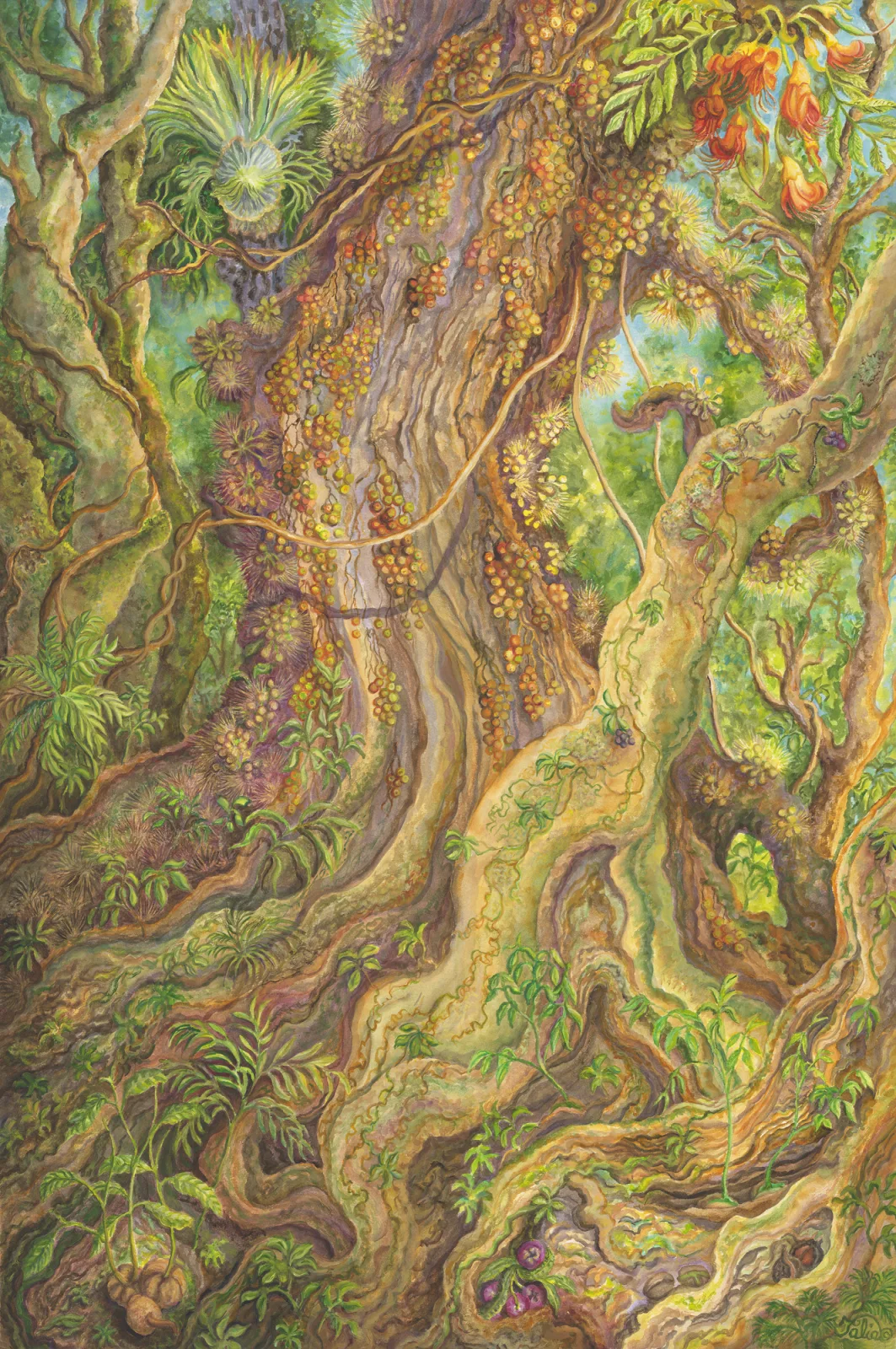 1
1
from the artist
The flora of Northern Queensland, particularly the Atherton Tablelands and Daintree, provided photos, drawings, and inspiration for this work, from multiple field trips.
The main tree is a “cluster fig” (Ficus racemosa), with figs appearing on the branches and trunk (a type of fruiting called “cauliflory” and unique to tropical rainforests). Fruit-eating birds and flying foxes swarm to these trees when fruiting. The large tree behind is known as a “bumpy satinash” (Syzygium cormiflorum), with lemon yellow flowers and early developing fruits along trunk and branches. Both trees have buttressed roots, as does the “black bean” tree (Castanospermum australe) to the right. These plank-like roots help provide stability—trees often lack vertical anchoring tap roots in the rainforest.
A branch of black bean flowers hangs down, providing a splash of red-orange colour, and some mystery as to which tree has provided this touch of beauty! It is often difficult to determine which branches belong to which trees in the crowded rainforest. Likewise, it isn’t always possible to see which tree colourful fruits have fallen from. Sprouting from the pod to bottom right are black bean seedlings, and to far right are macadamia nuts—these members of the Proteaceae family were apparently very early migrants to Gondwanan Australia. Another early arrival is the “idiot fruit” (Idiospermum australiense), found only in the Daintree region, and featured to far left (fruits and sprouting seedlings). This primitive plant has possibly lived for 120 million years (Williams & Adam, 2010, pp. 37–38). Nearby is the “zamia fern” (Bowenia spectabilis), the only cycad to display bipinnate leaves (leaves that extend to the mid-vein and are again divided). The genus Bowenia is endemic to the rainforests of tropical Queensland (Williams & Adam, 2010, p. 10).
Another delightfully edible (purple) fruit is also included to lower right. It is grown in many gardens and known as “lilly pilly” (Syzygium papyraceum). The smaller purple berries on the vine trailing up the black bean tree trunk are also edible, but astringent unless the skins are removed. They are known as “native grapes” (Cissus hypoglauca) and also “five-leaved watervine”, as the stems can be cut to provide water (Cherikoff, 1989/2000, p. 154).
The epiphyte on the tree in the upper left background is an elkhorn (Platycerium bifircatum). These spectacular plants can grow quite large and are popular with gardeners—and botanic gardens—to adorn a feature tree.



